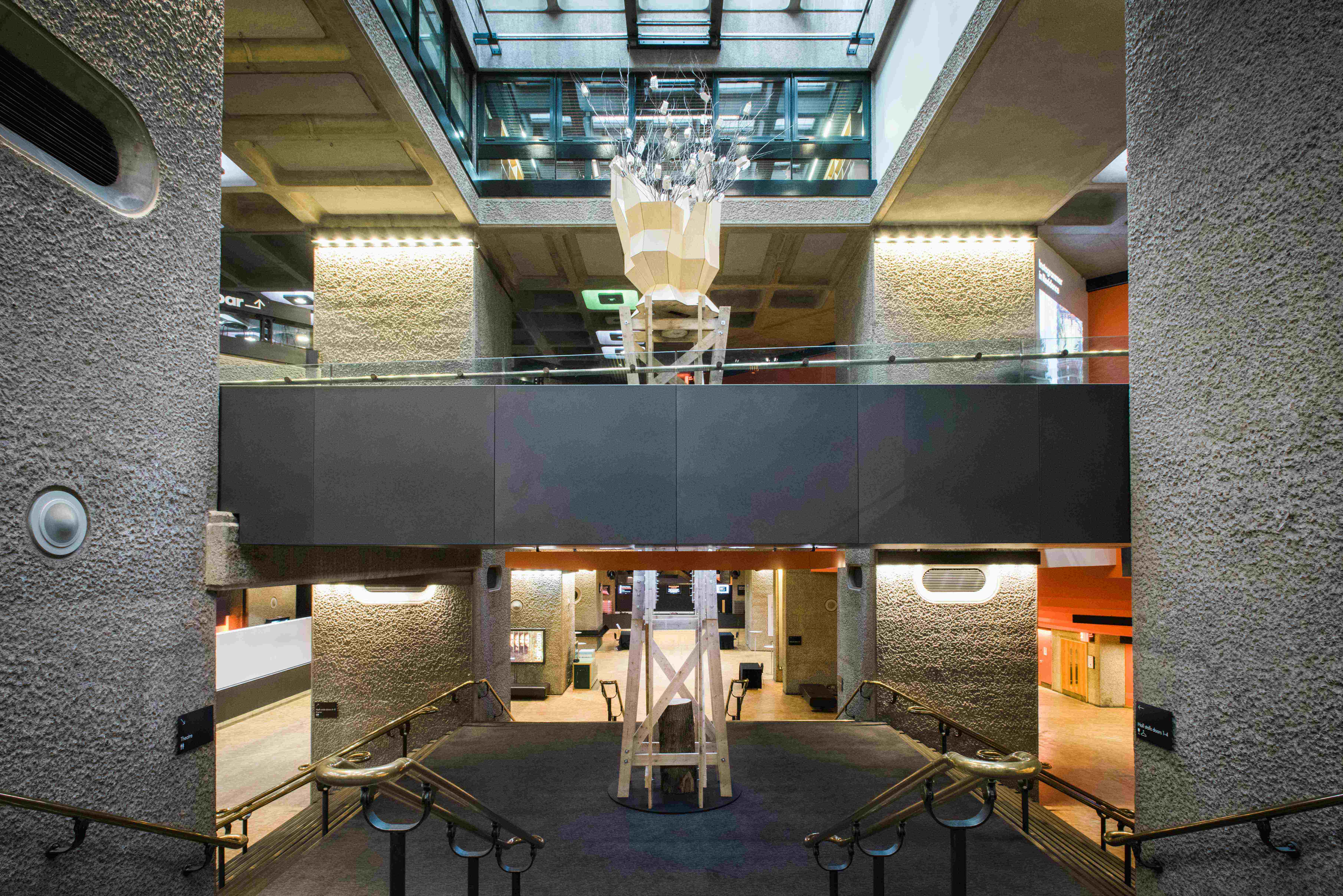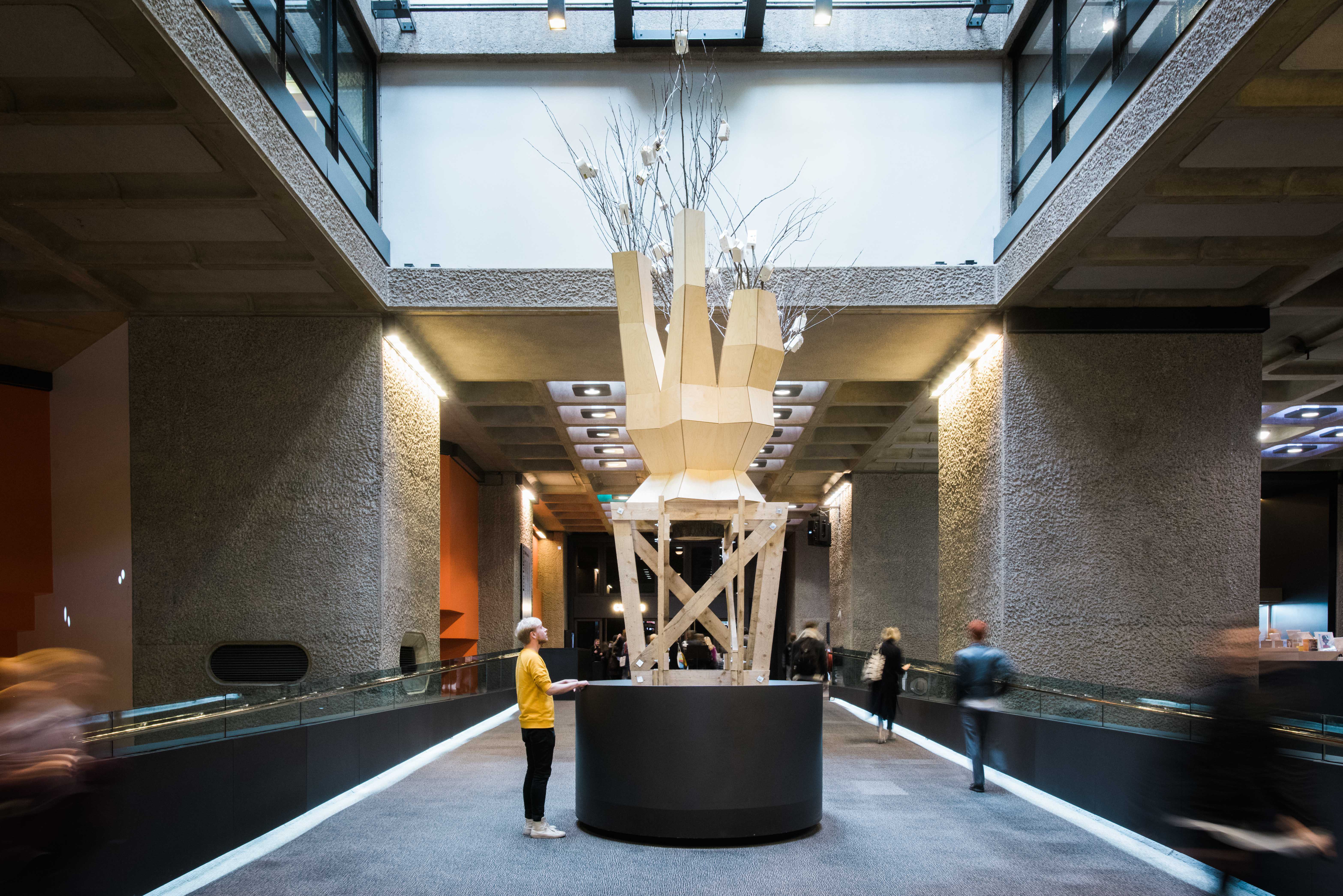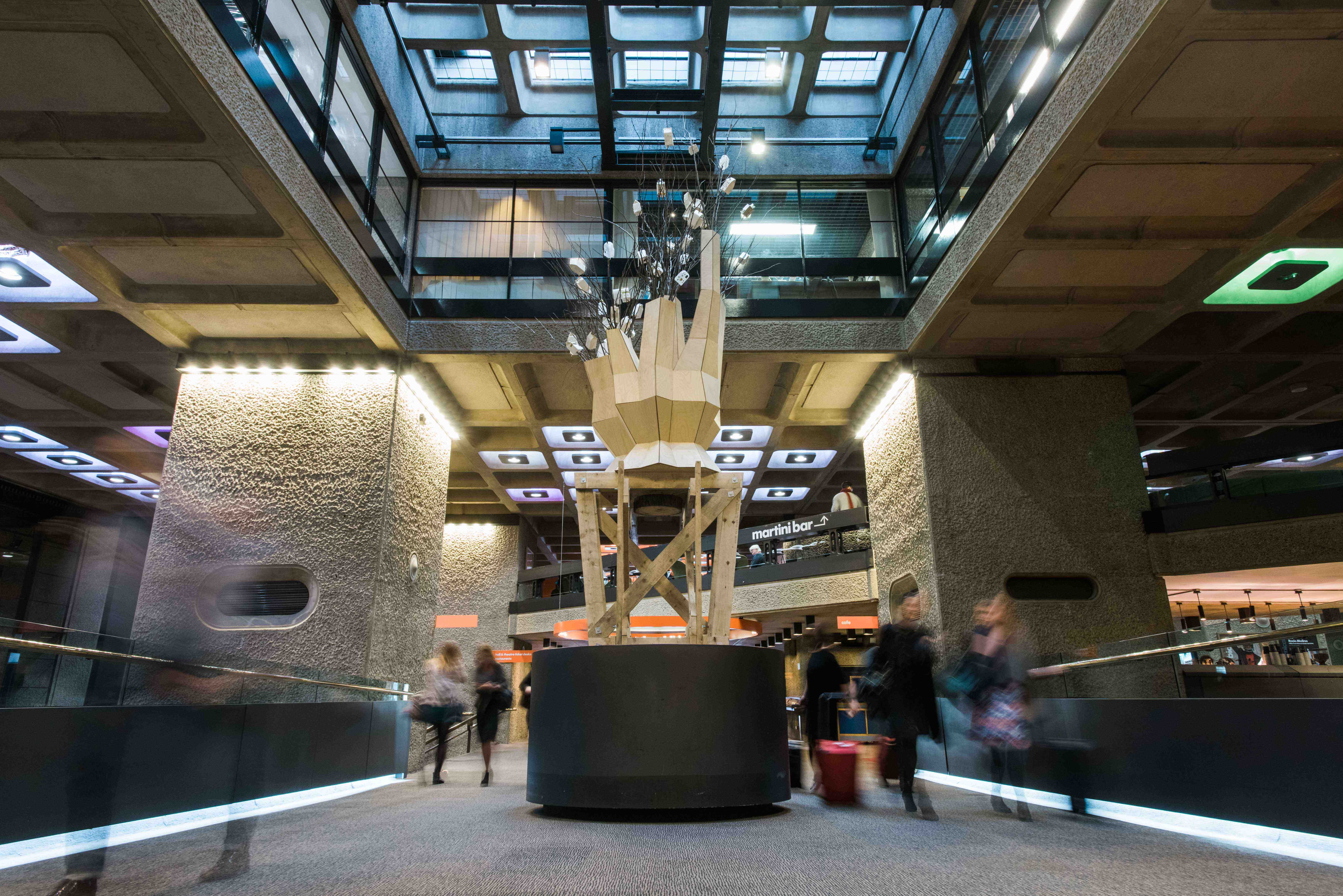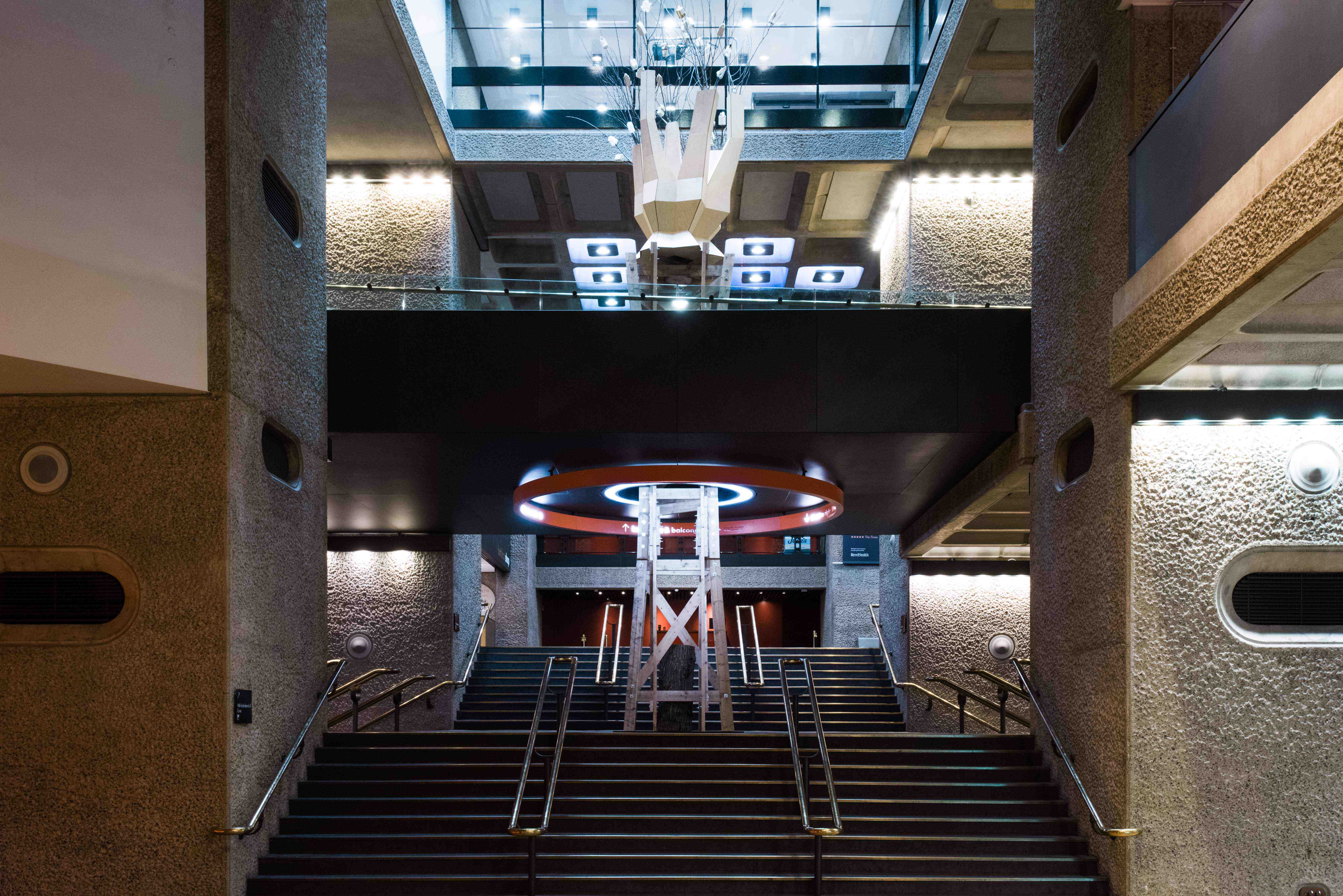The People's Forest (2018)
The People's Forest
The William Morris Gallery, London, UK
3 March - 20 May 2018
The Fairlop Oak
Barbican, London, UK
17 October 2017 - 20 March 2018
Workshops, events, and walks
Epping Forest, Walthamstow Garden Party, Open Fest
2016 - 2018
A two-year project encompassing installation work at the Barbican, a solo exhibition at the William Morris Gallery, and workshops, walks, and events in Epping Forest that explores the forest as a site of protest, contested resources, conflict between capital and common, and as a threshold between rural and urban. Gayle Chong Kwan developed portraits of people who have a special relationship with Epping forest, the oldest and largest forest in London, taken at sites of personal resonance, including conservation arborists, a Forest Keeper and guide, a circus-trained aerialist who rides in the forest, and an author with an allotment on the edge of the forest. Each wears a sculptural headdress created from photographs of the areas important to them complete with root, branch, and tendril-like forms cut directly into the surface, also exhibited as three-dimensional sculptural works on wooden stands that reference the wooden protest towers erected in the 1990s against the M11 Link Road. A series of photographs record intimate trees in Epping Forest that have grown to lean on and embrace each other, alluding to the liminal and illicit nature of the primeval woods, and the connectivity of growth.
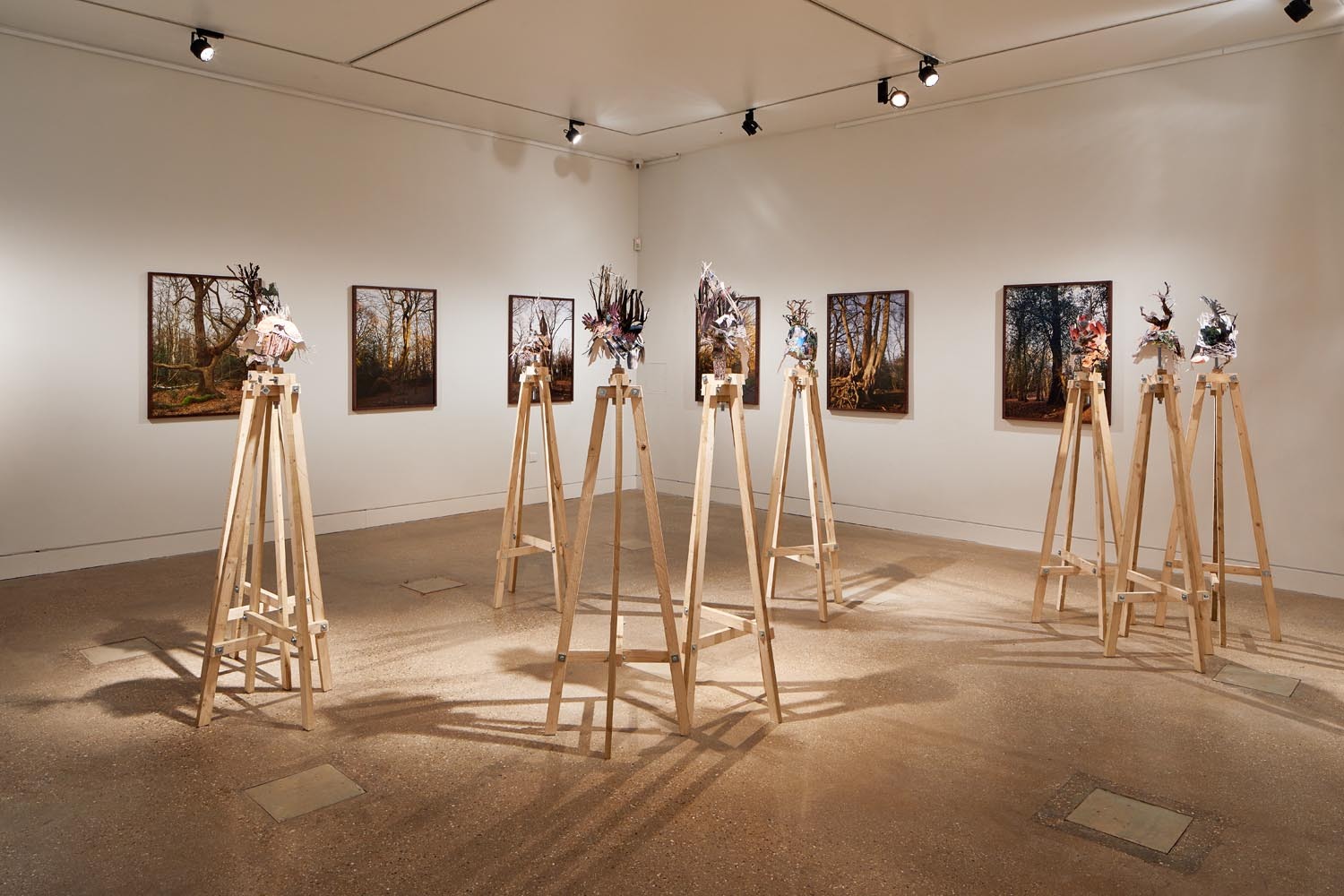
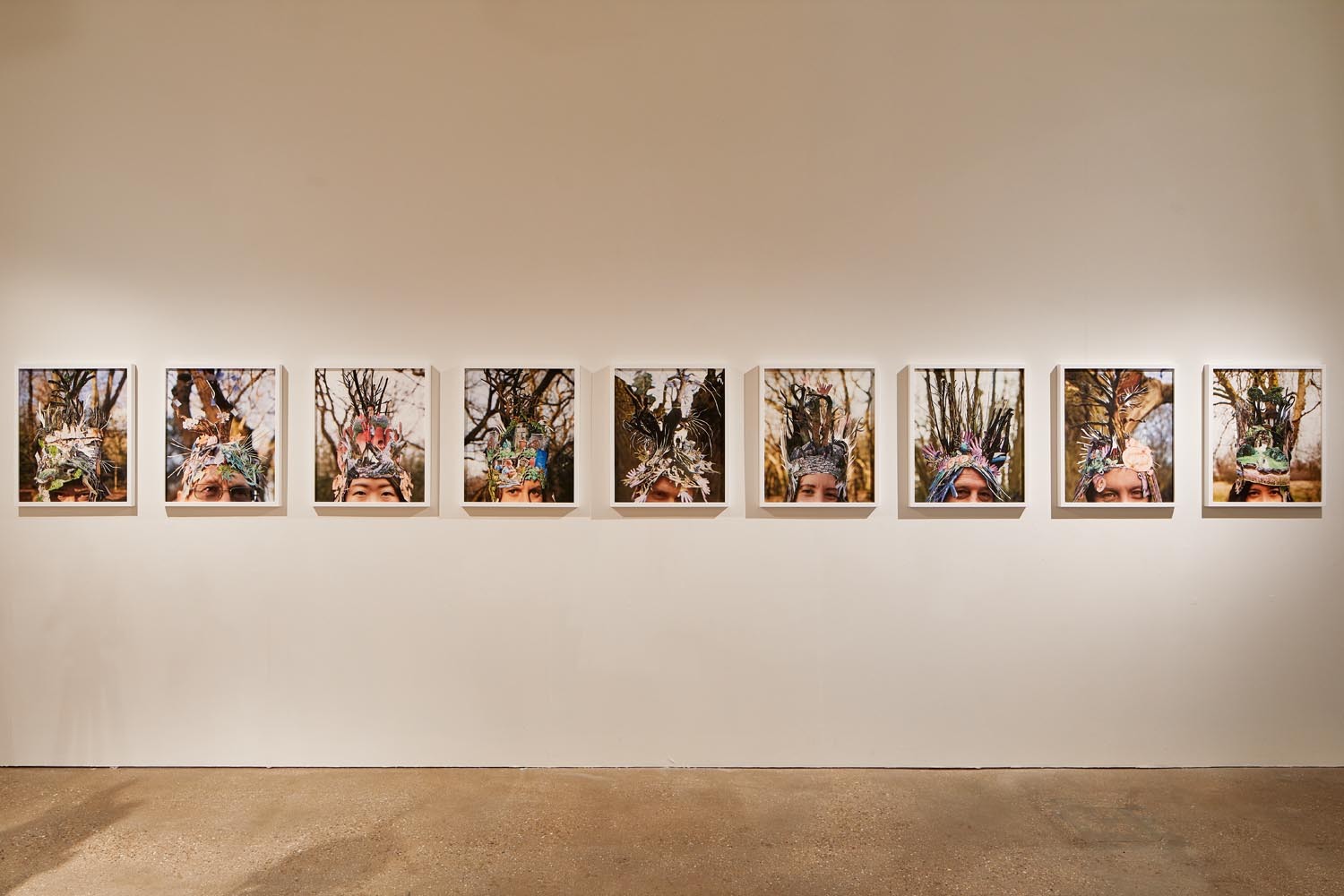
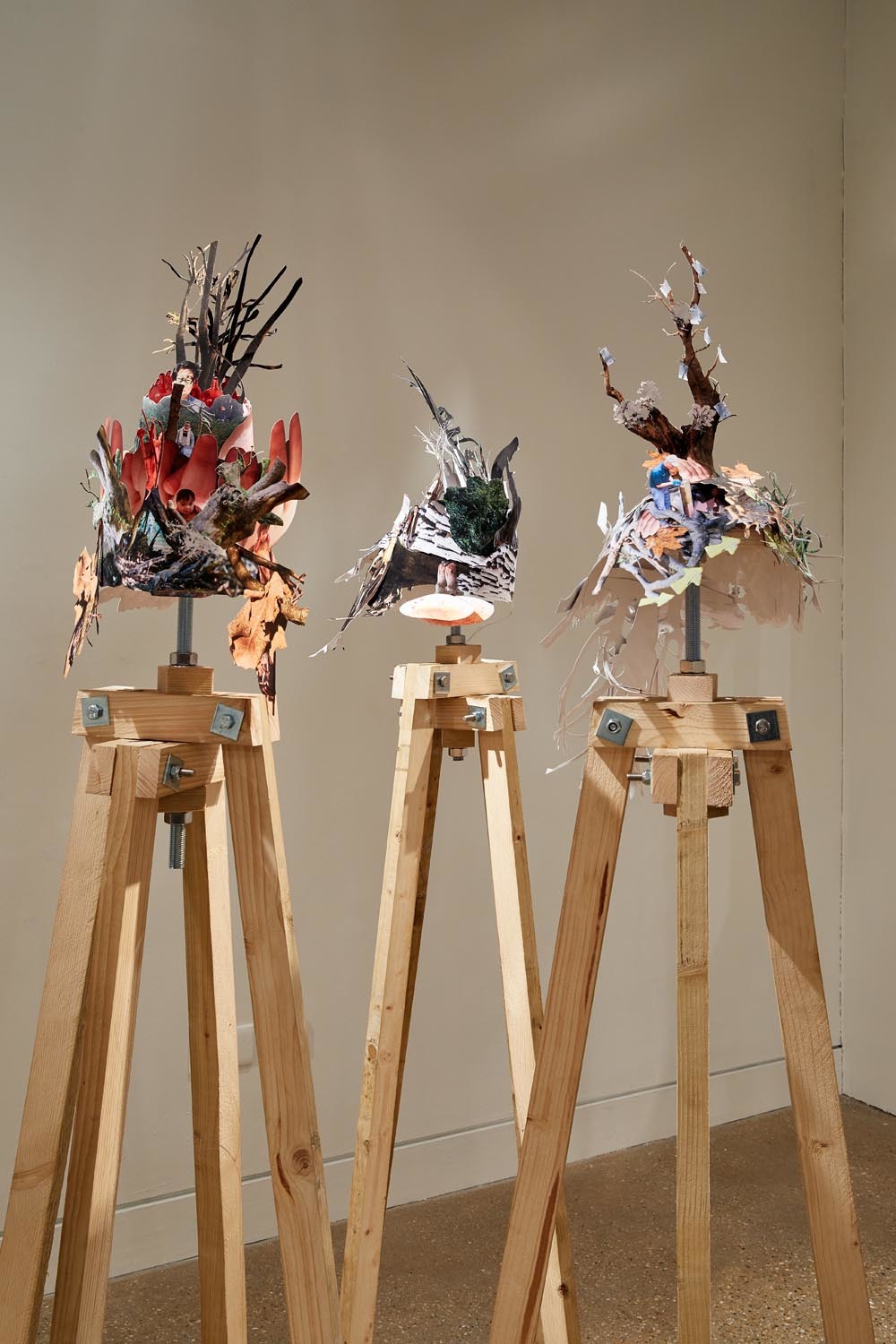
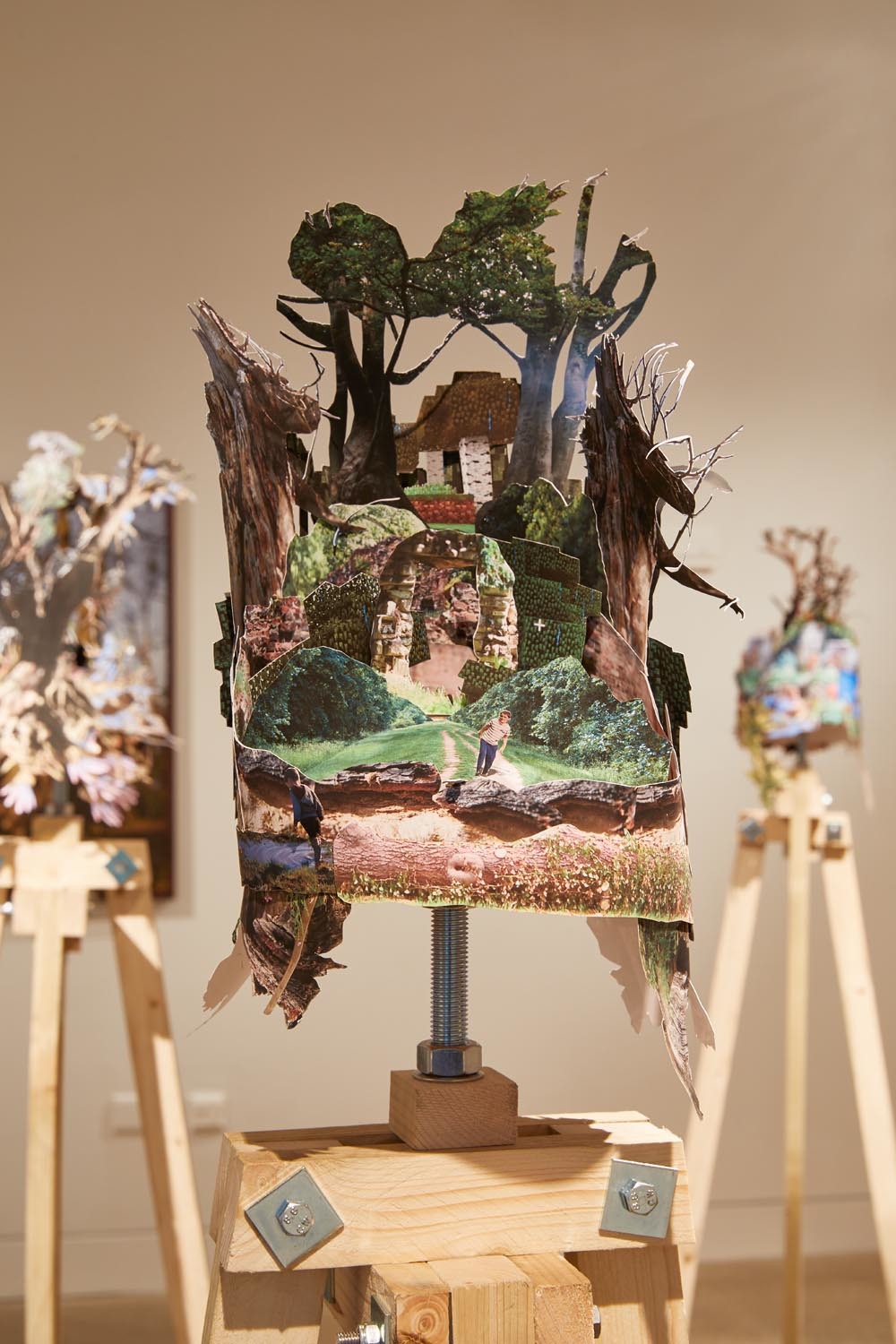
Chong Kwan’s art consciously cultivates offshoots. From a central premise or framework, her pieces evolve through the participation of the people she encounters in her research and on her travels....A celebration of the diversity of personal stories, and of common roots, the work also mourns other houses (and communities) that have been lost, as the capital city expands and as roads and other major developments clear away what was there before.
Steven Bode
Director, Film and Video Umbrella, UK
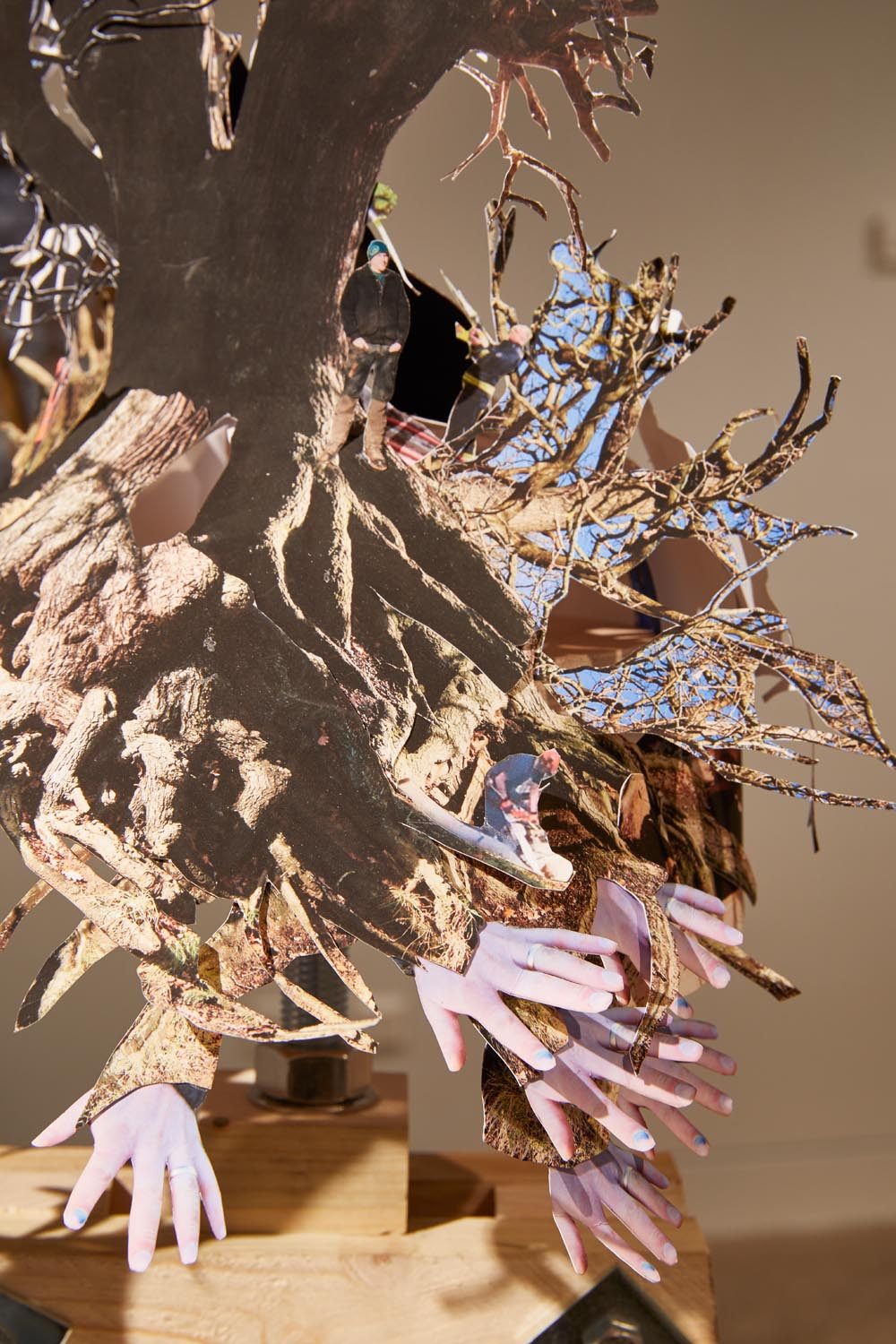
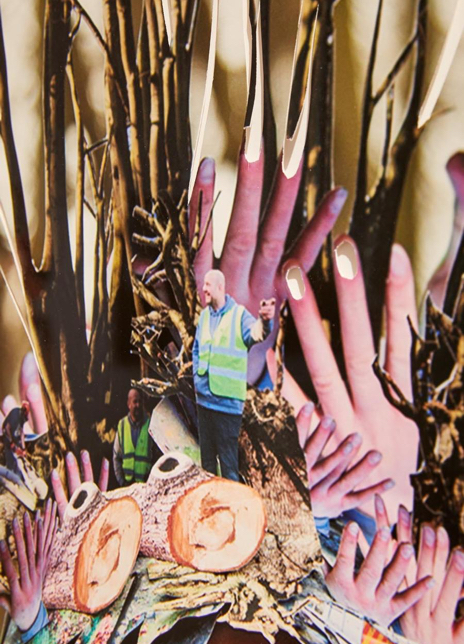
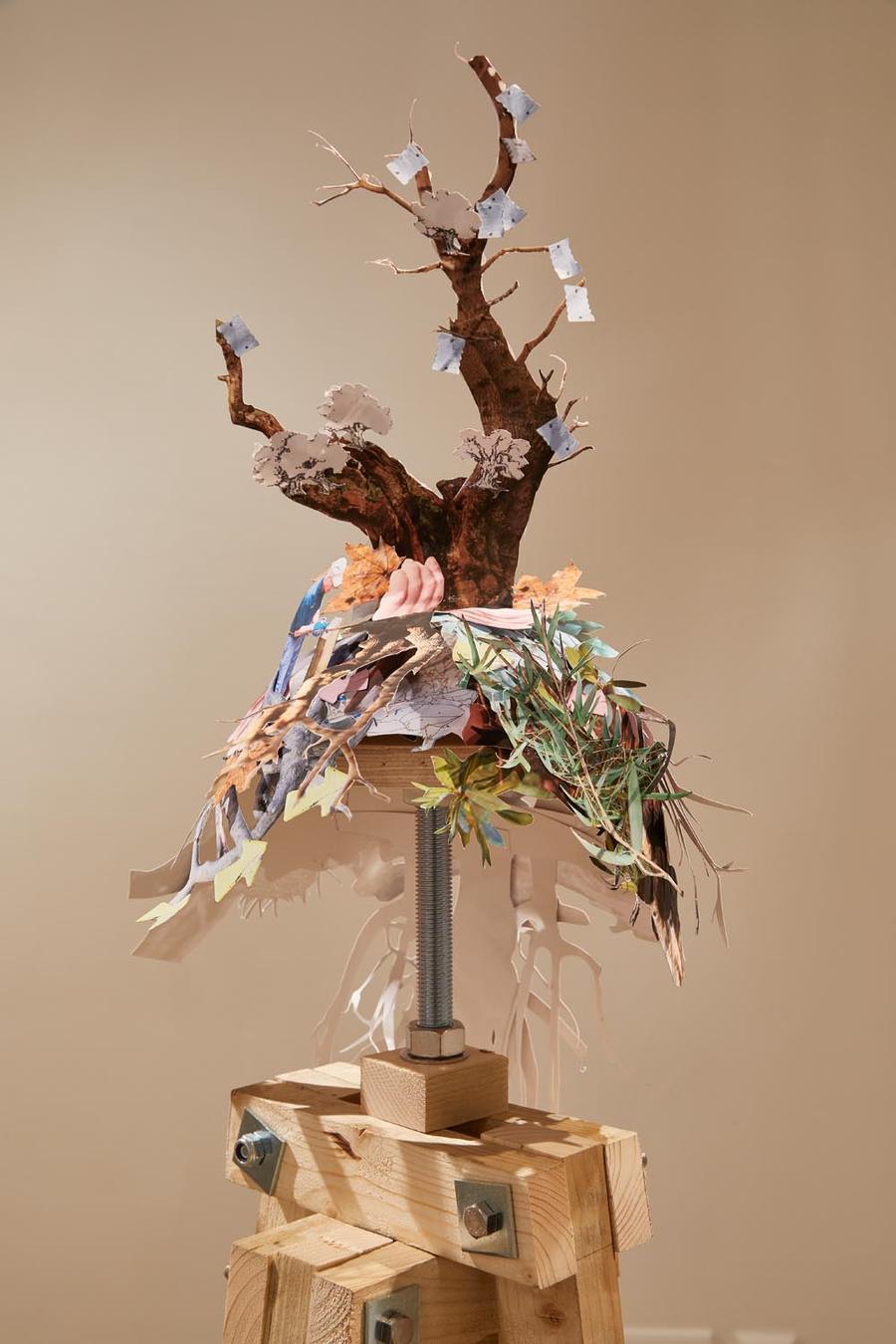
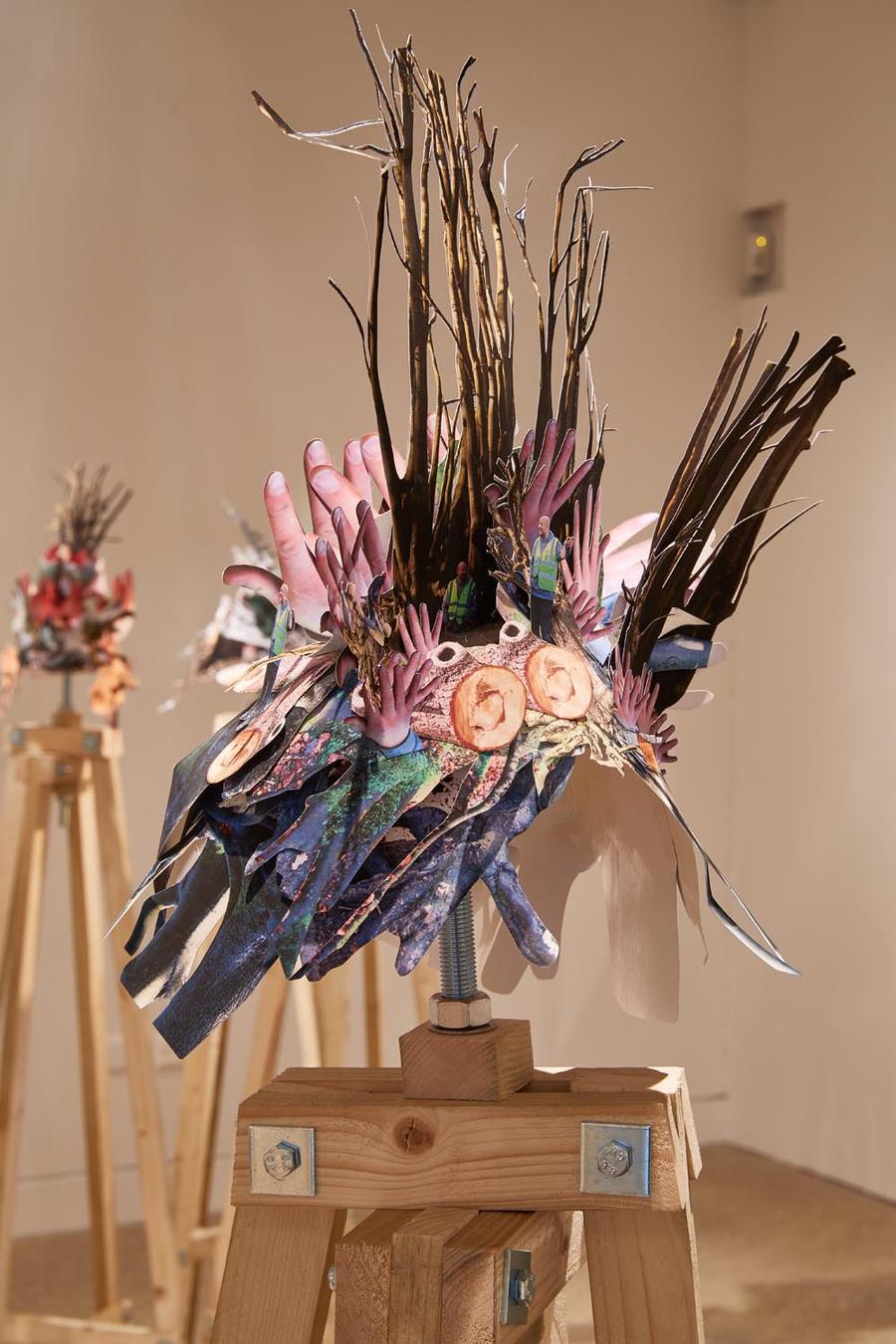
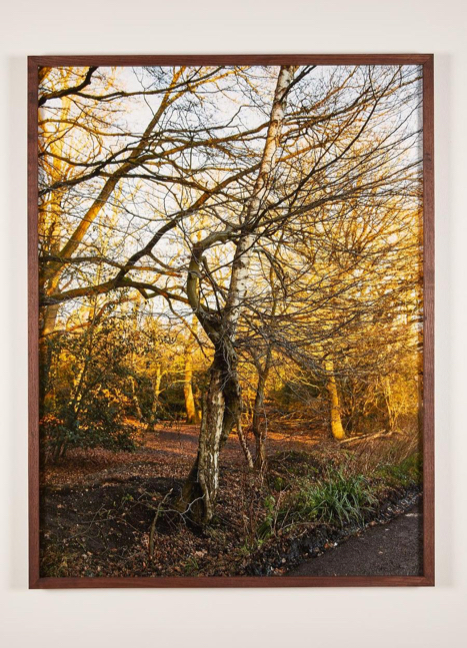
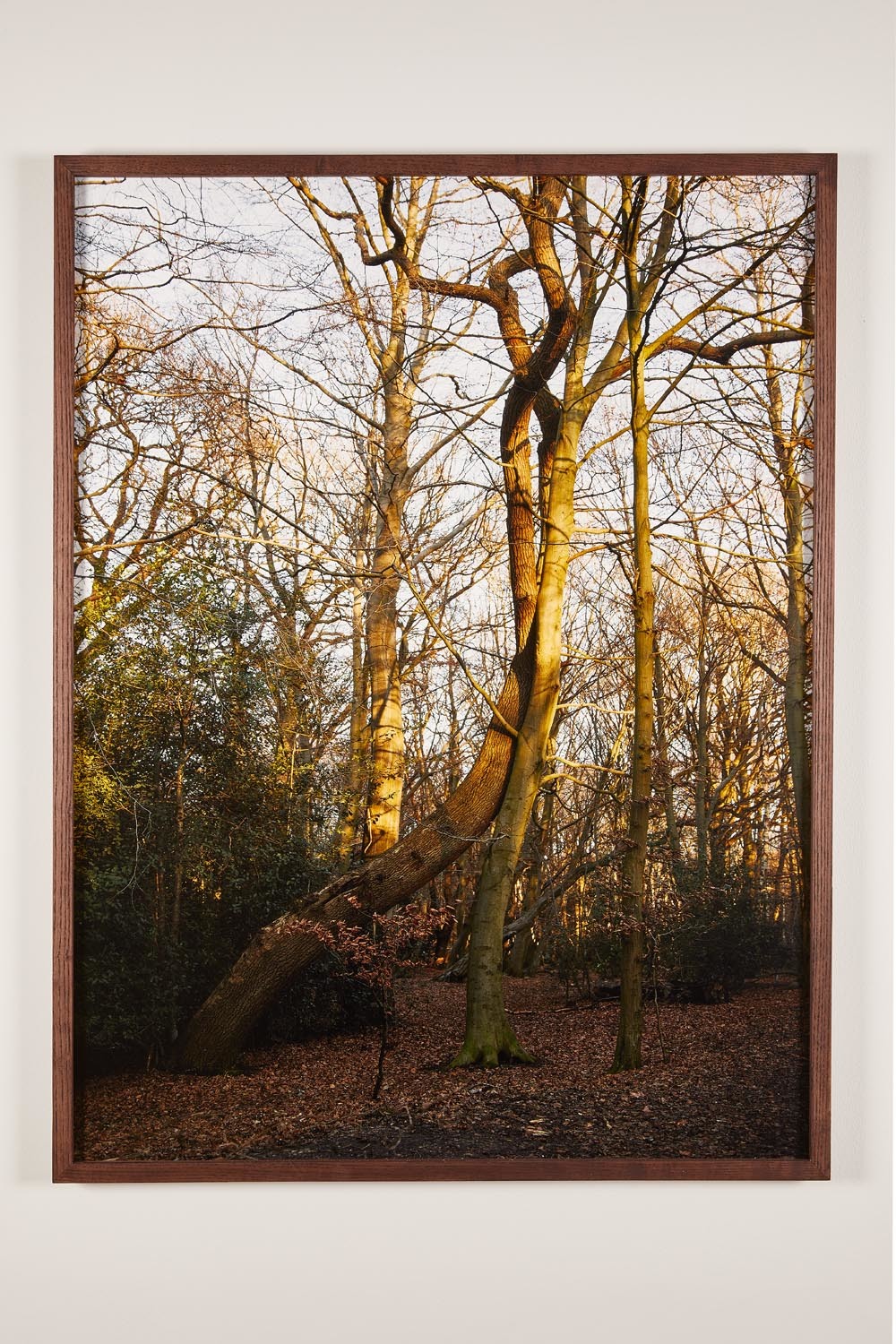
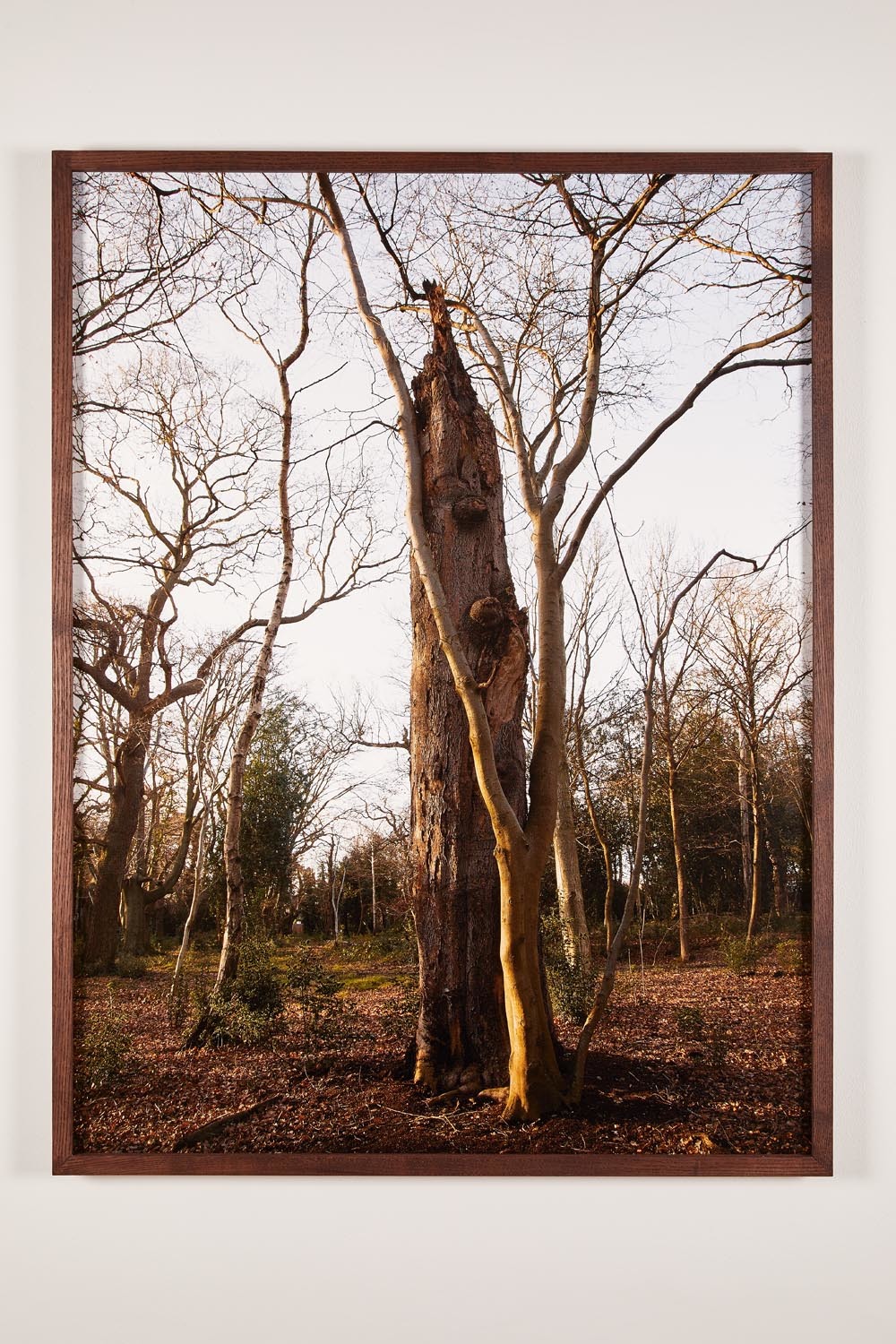
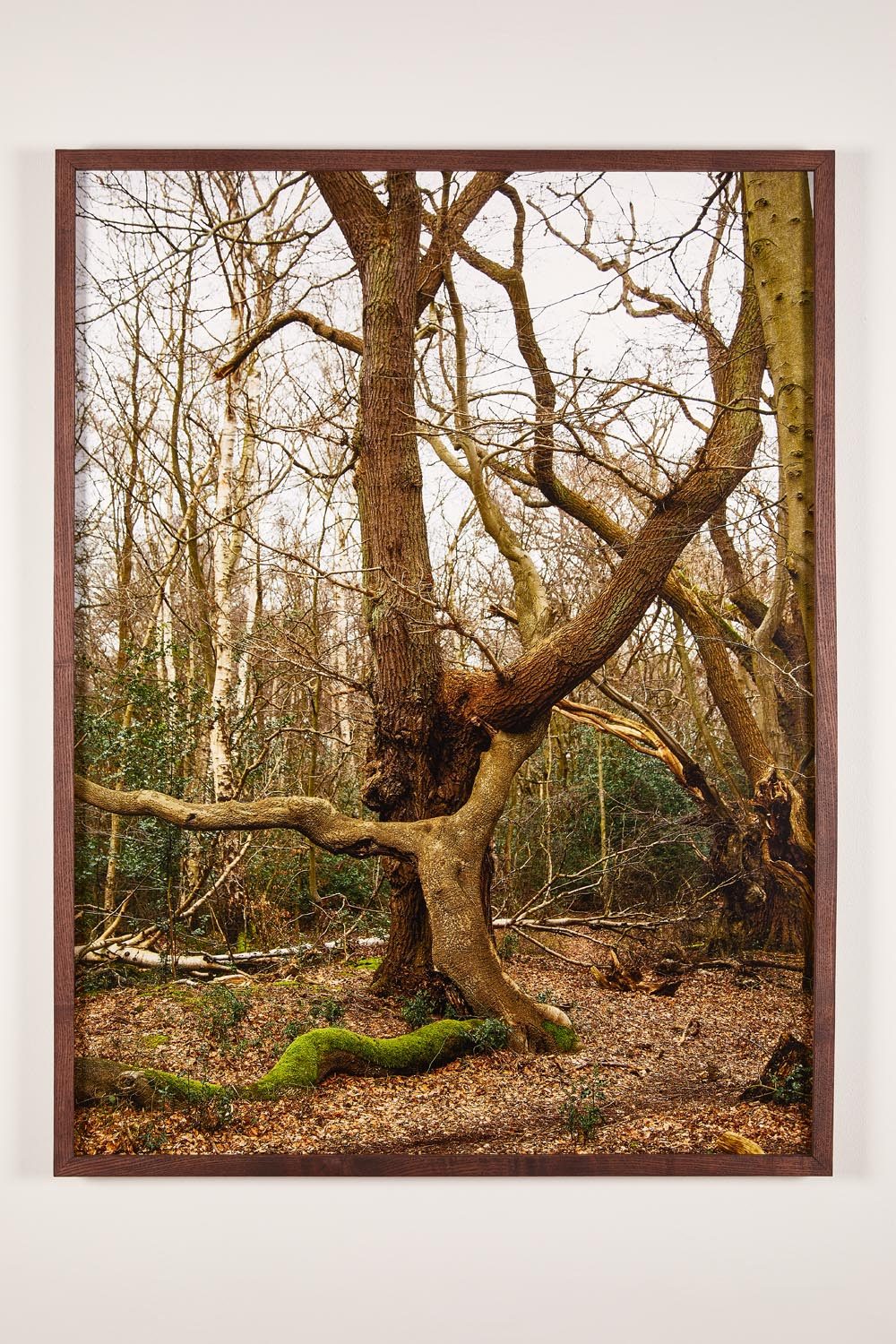
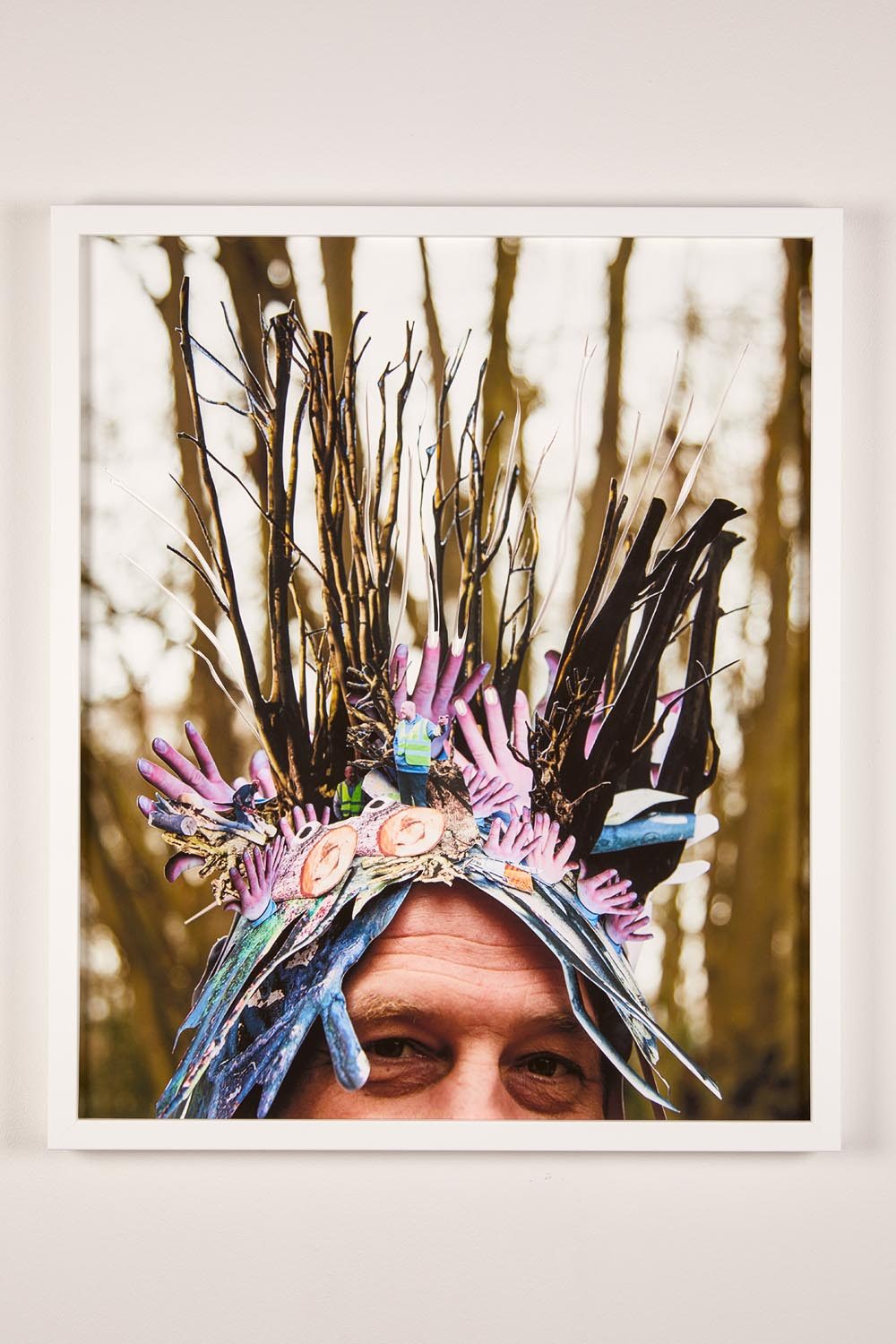

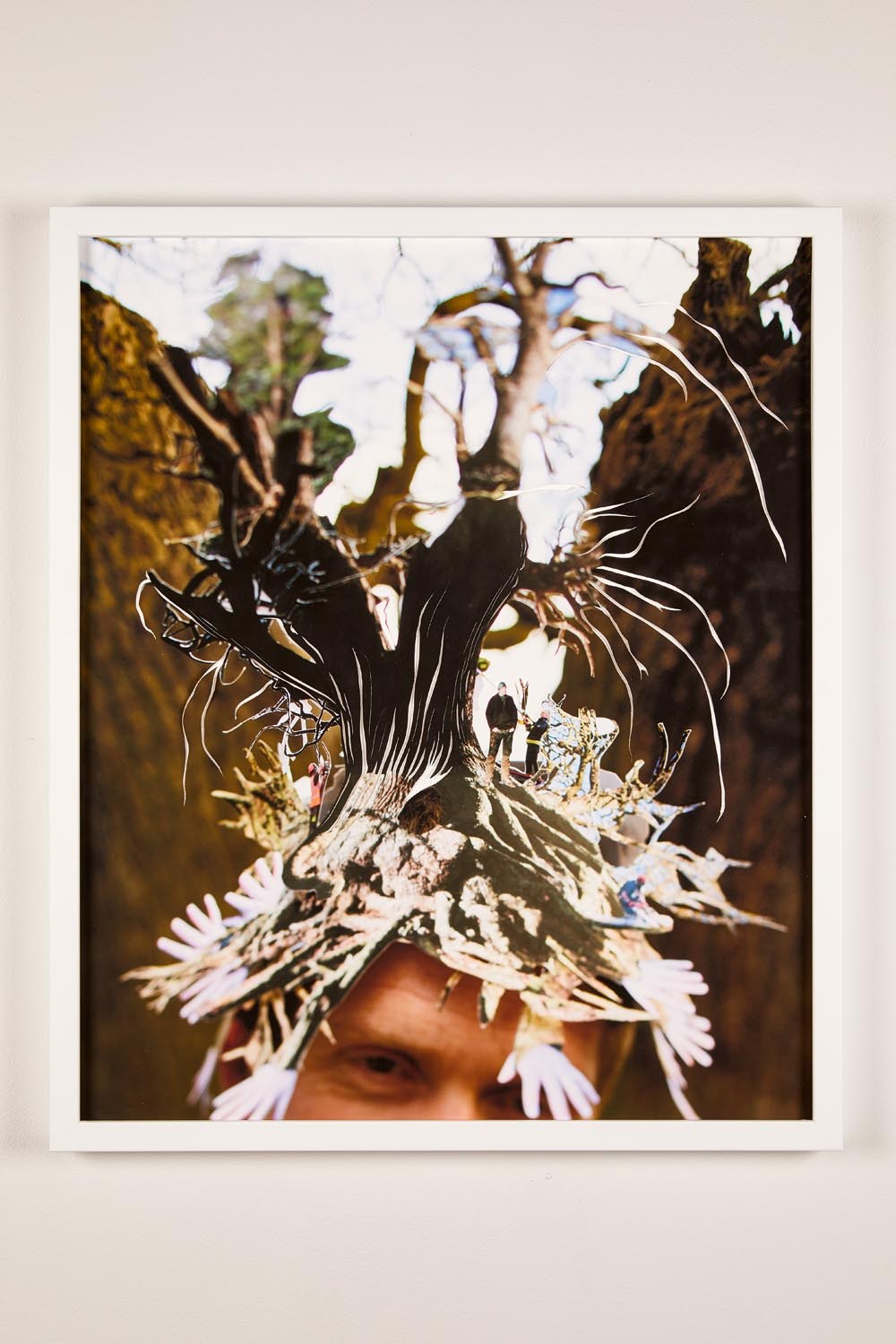
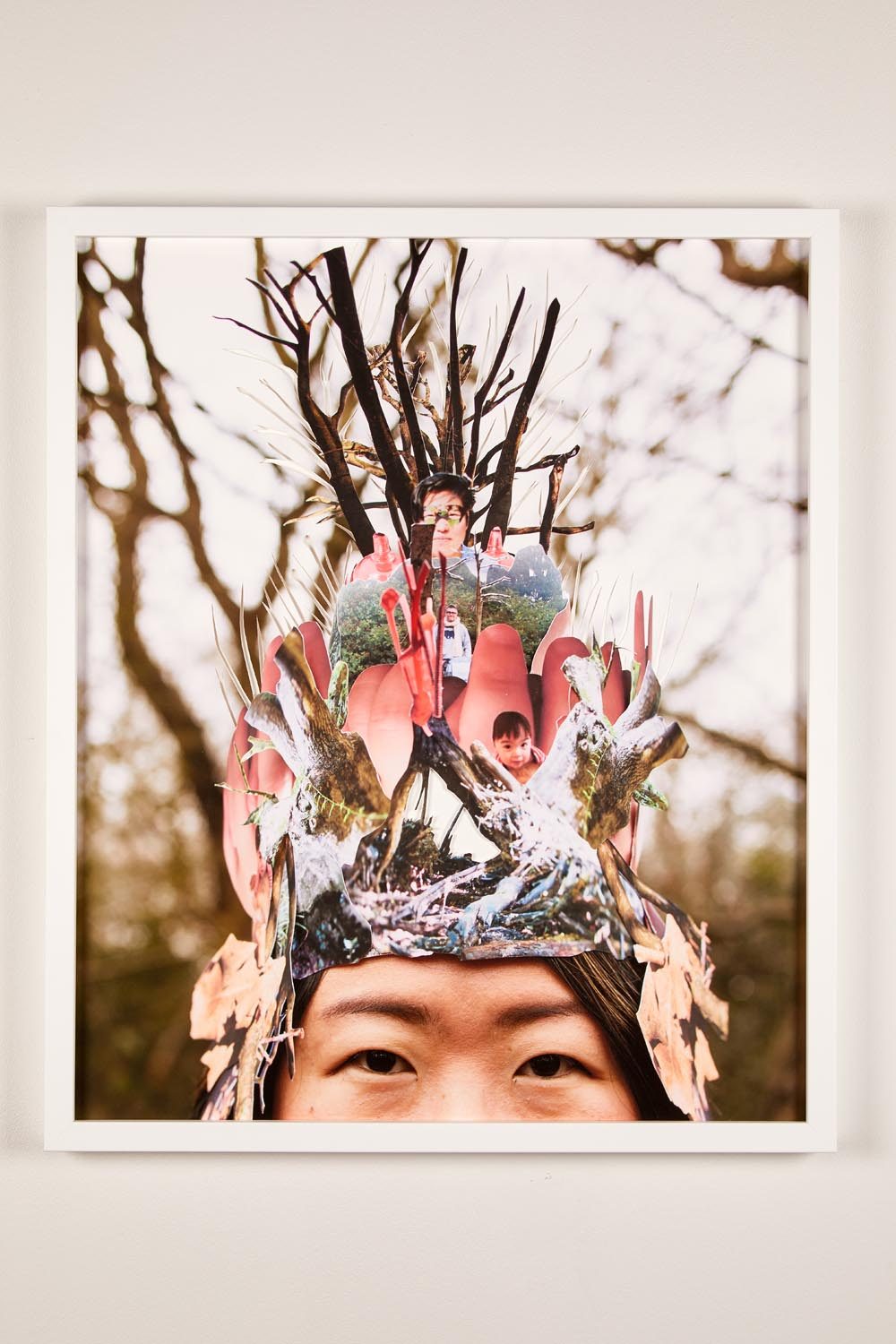
'The Fairlop Oak' shown at the Barbican in 2018, is a monolithic sculpture that emerges out of the Lightwell whilst firmly rooted on the Mezzanine Level at the Barbican. It draws upon the famed pollarded trees in Epping Forest and specifically the Fairlop Oak, a tree that once stood in nearby Hainault Forest and which was the site of a popular eighteenth-century fair. Formed of three parts, the installation consists of a geometric pollarded tree, a wooden scaffold which references recent road protests, section of a tree trunk, and felled branches on which sit miniature houses created by people local to the forest. Surrounded by the scaffold which holds the pollarded tree aloft, the artist has inscribed a timeline of politics and protest related to Epping Forest onto a tree ring.
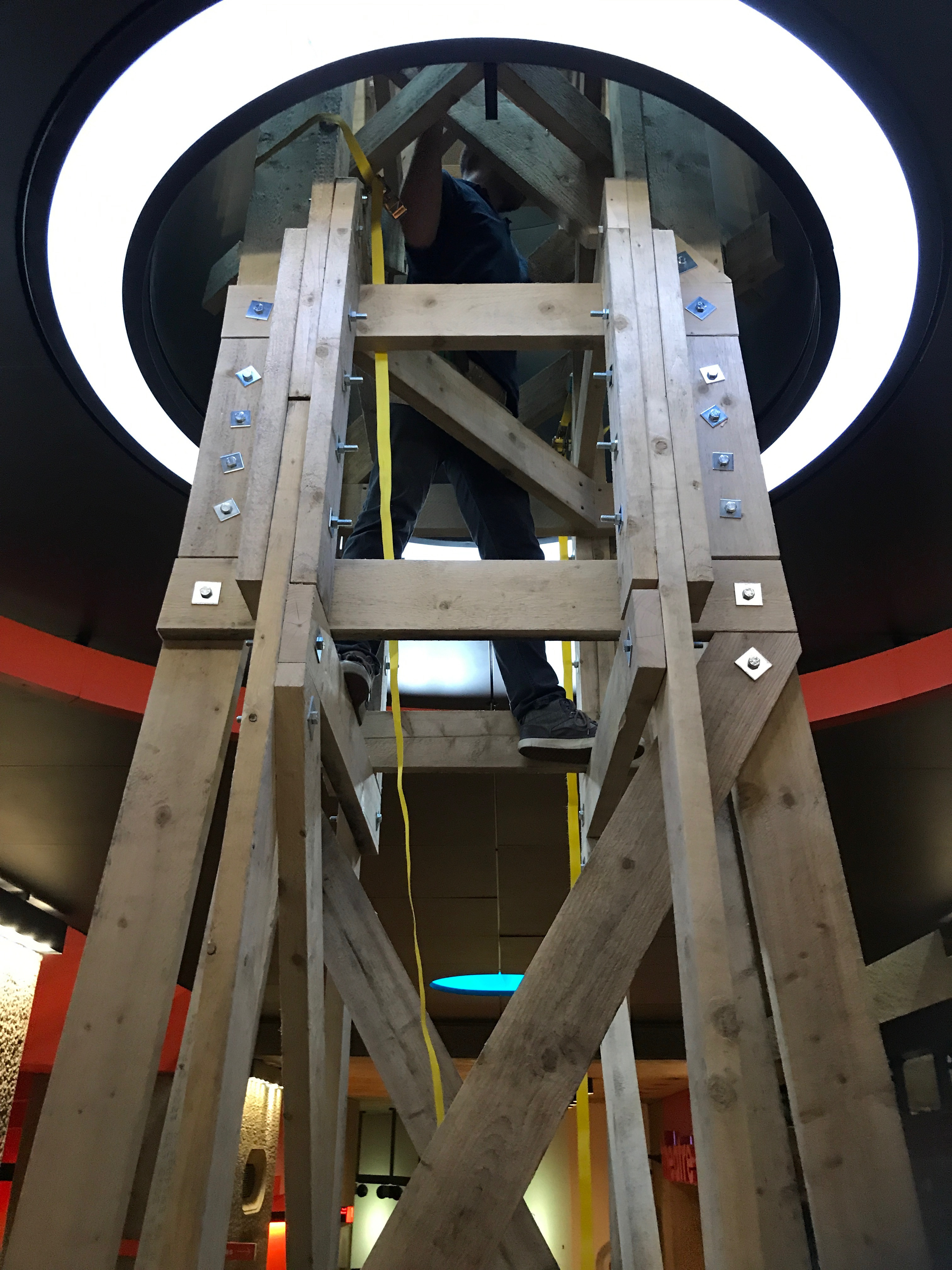
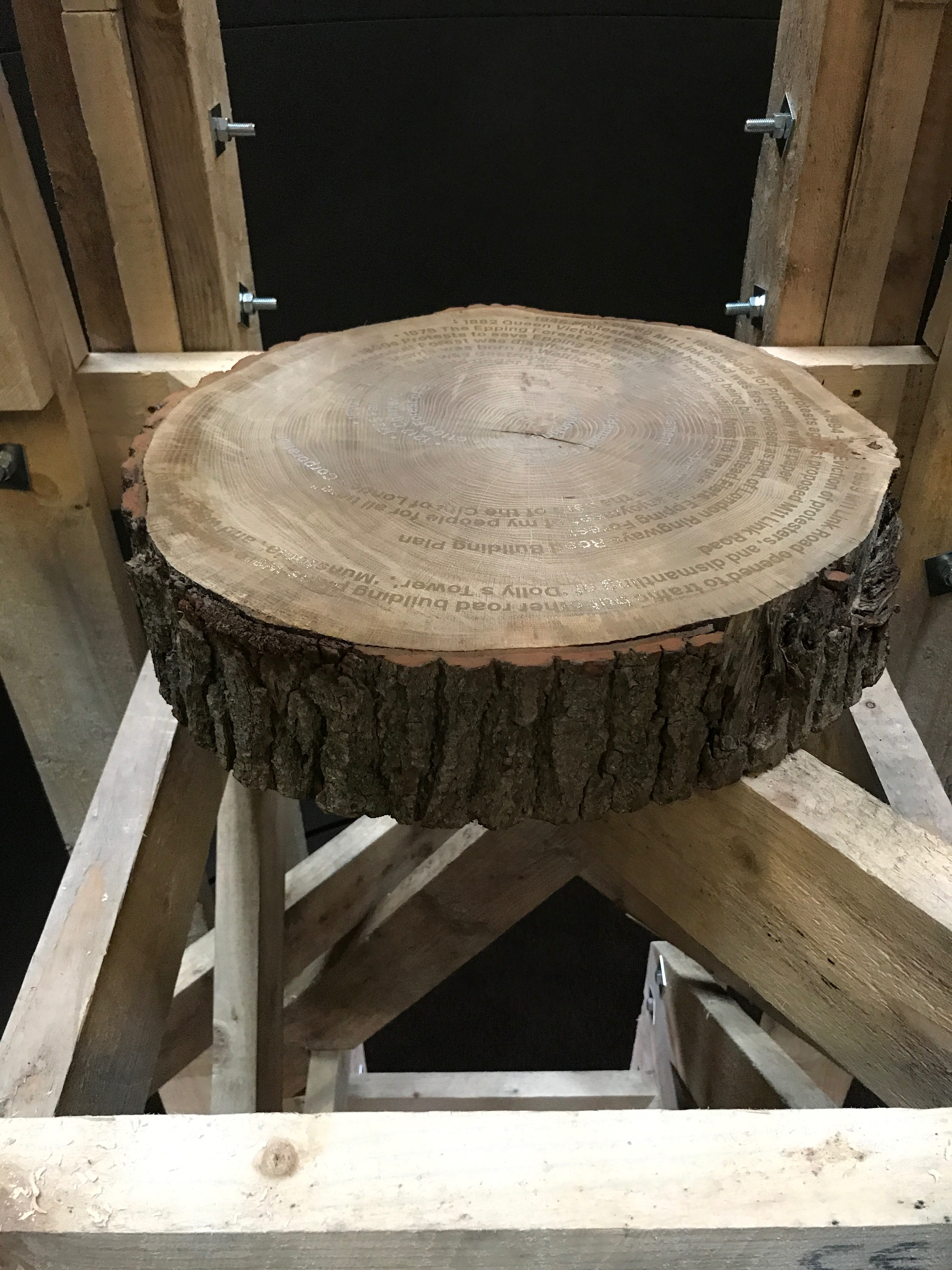
The work in 'The People's Forest' developed through workshop sessions with diverse communities that explored the forest and the built environment, protest in and about the forest, the M11 Link Road protests in the 1990s in the borough of Waltham Forest, and sensory experiences of collaboration and interiority, held at Walthamstow Garden Party and in various sites throughout Epping Forest.
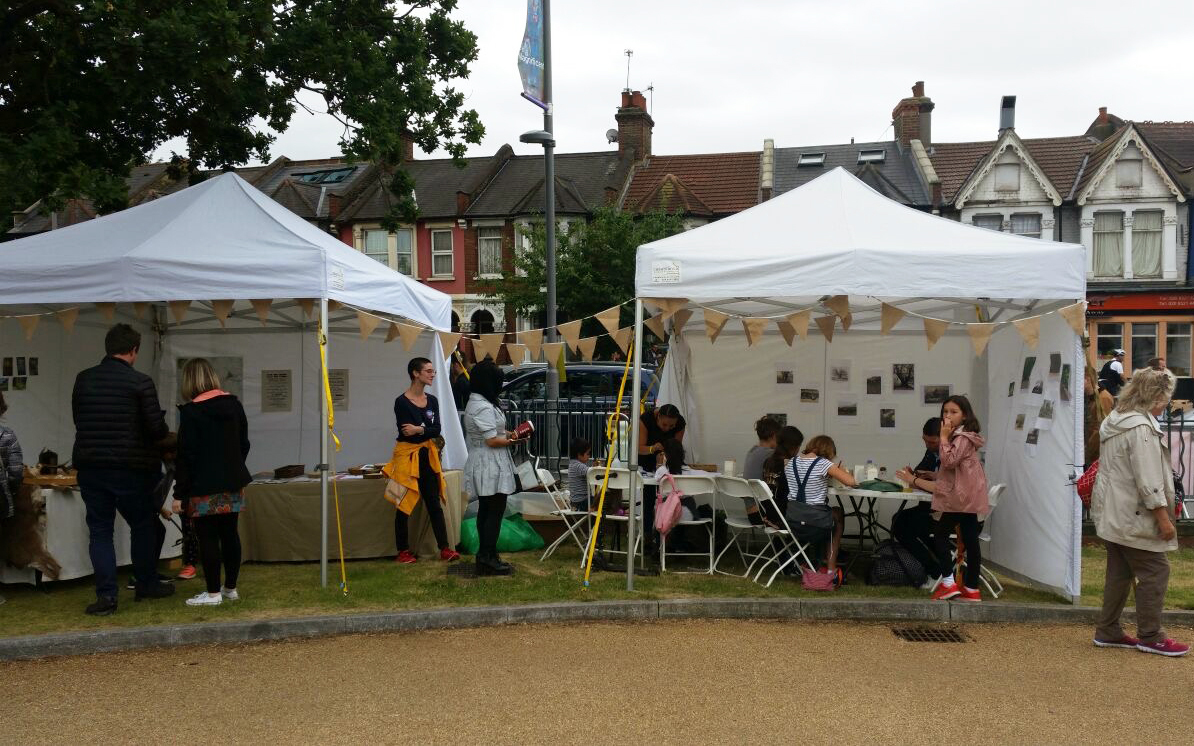
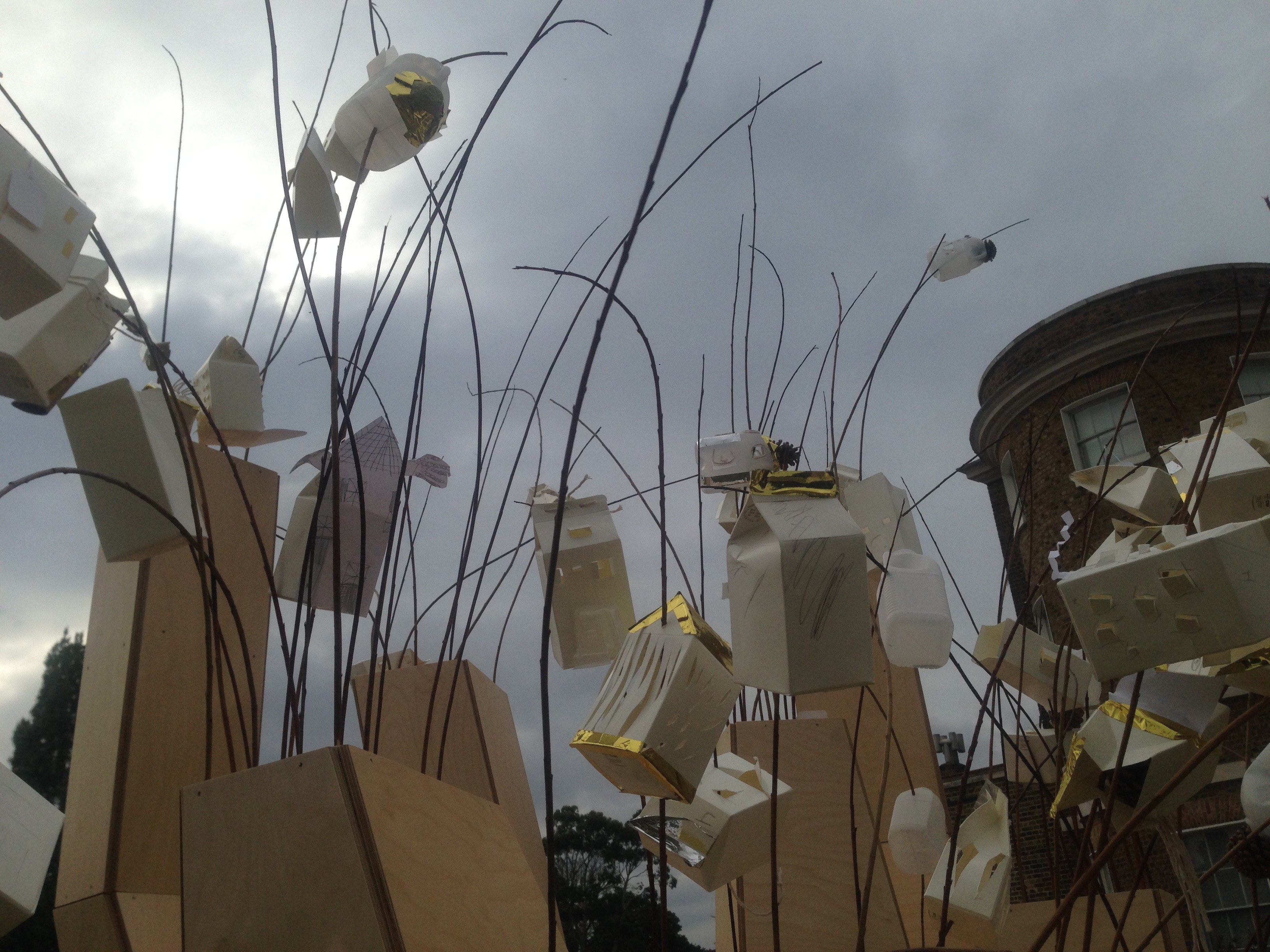
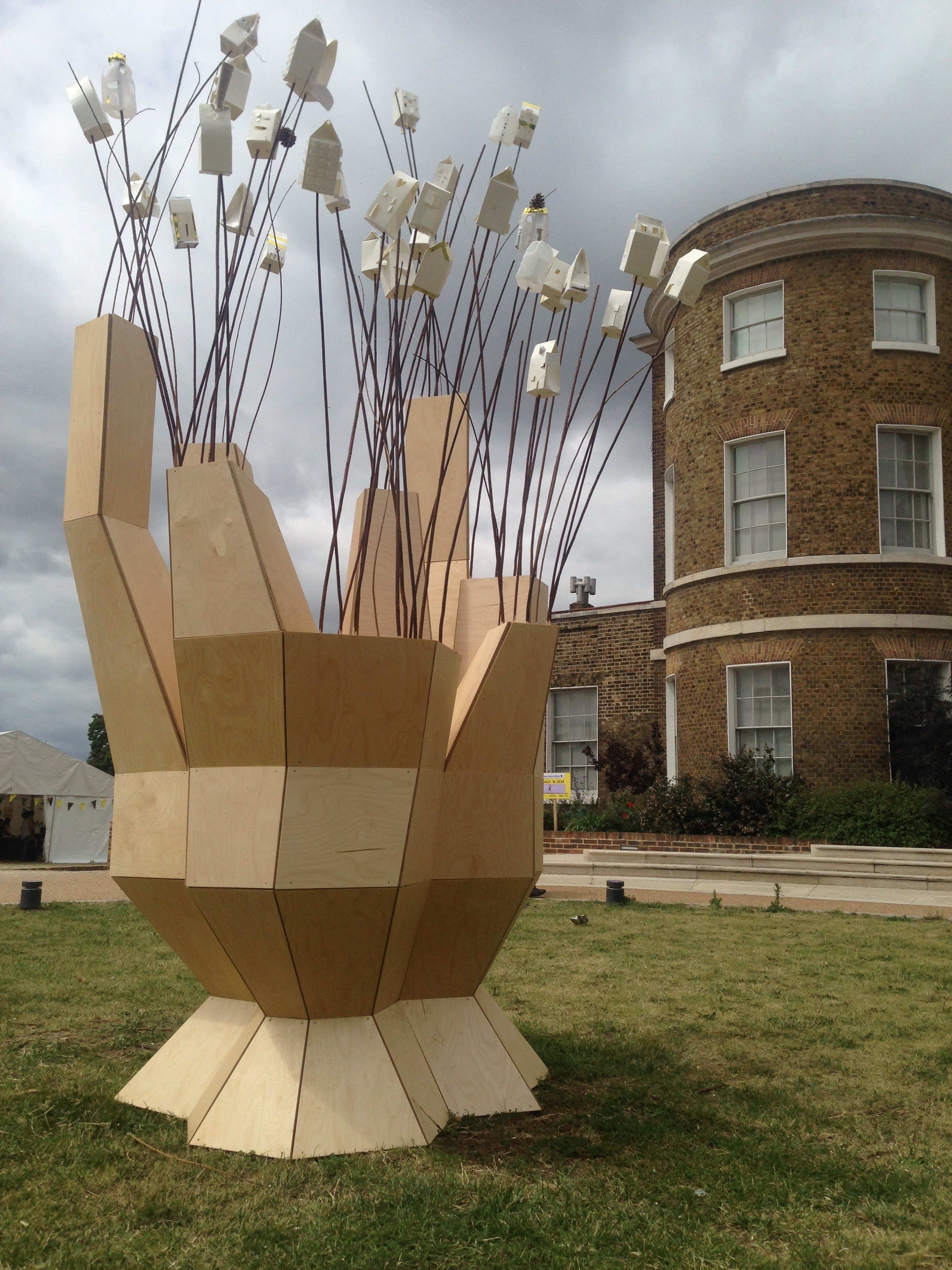
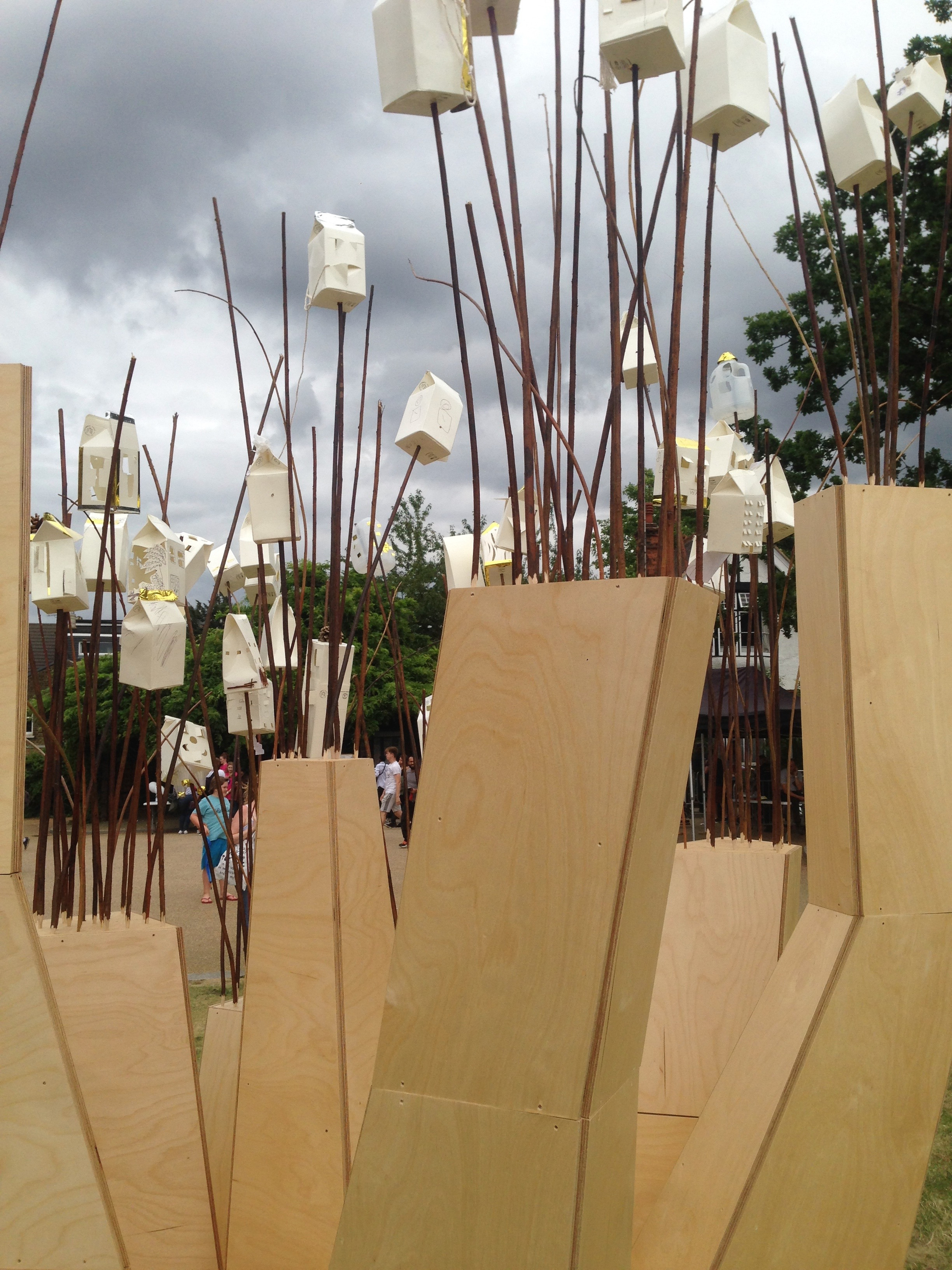
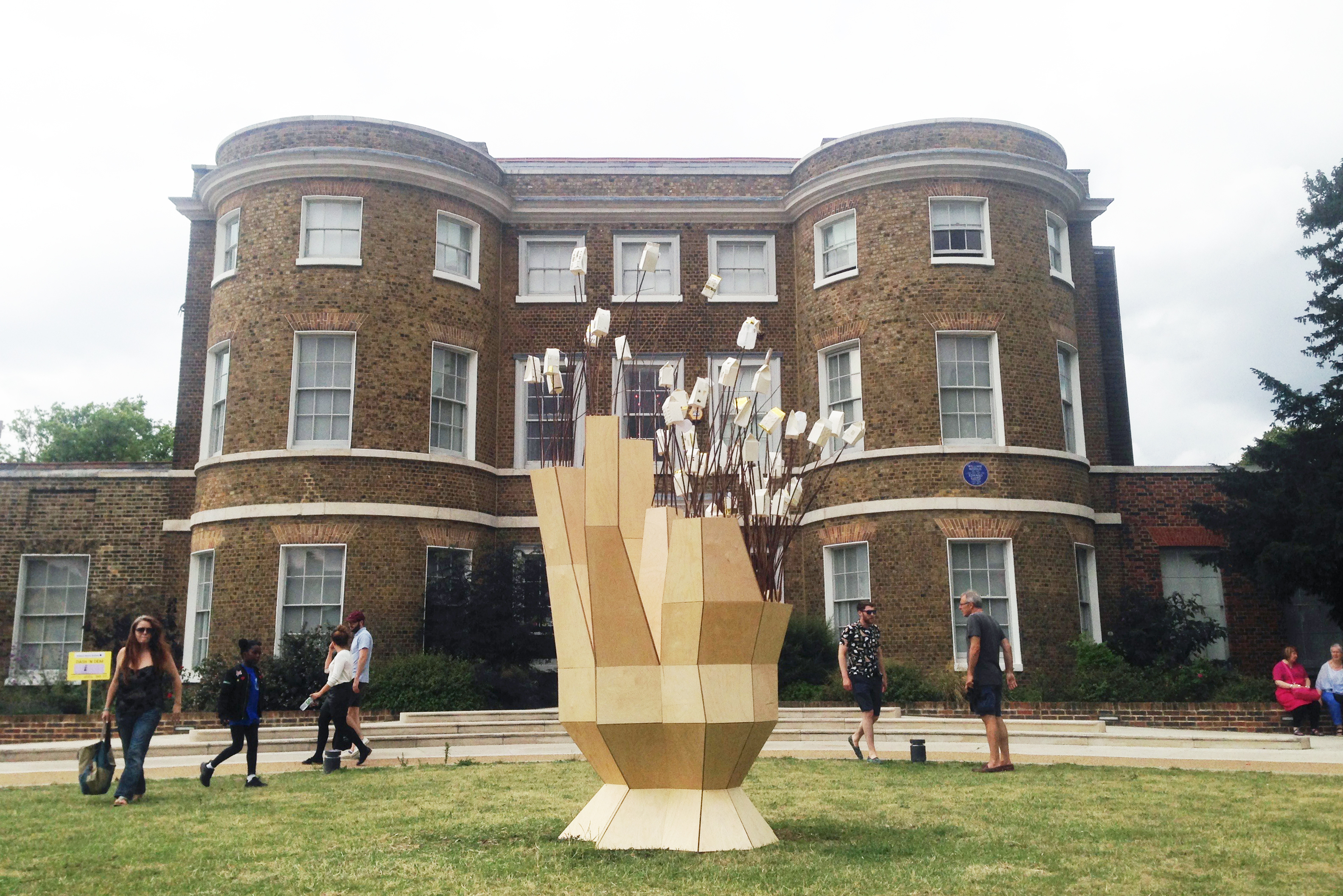
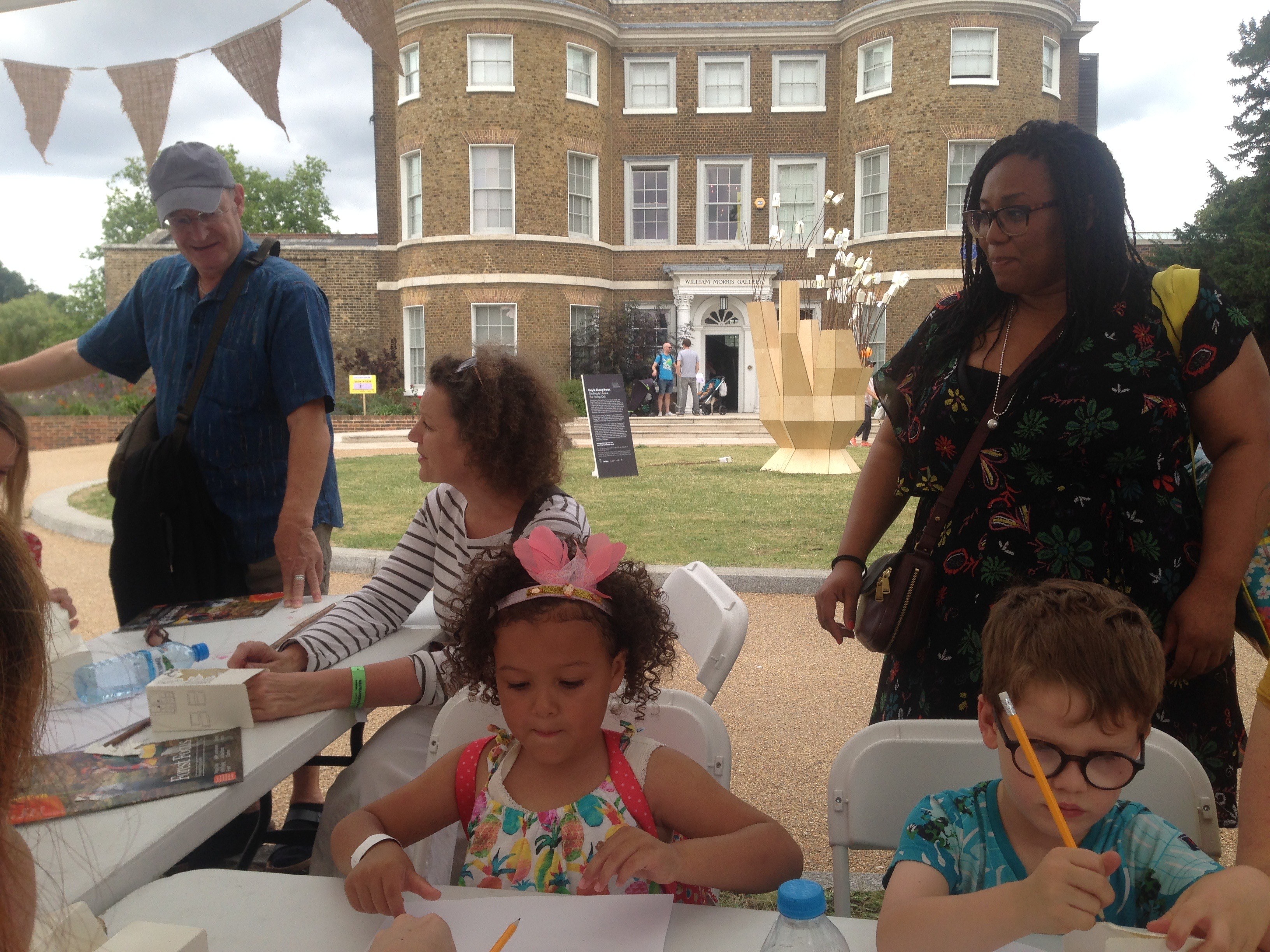
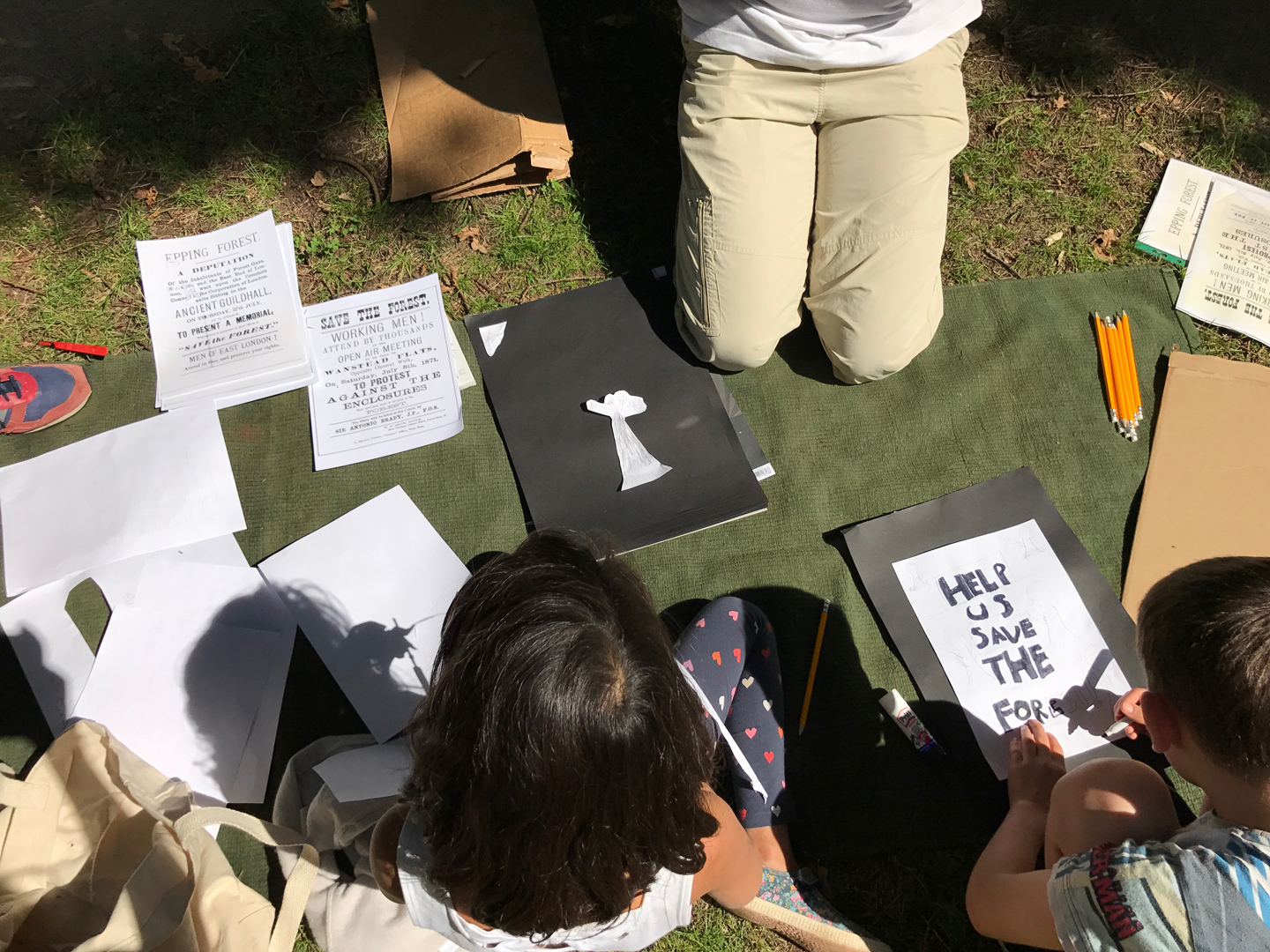
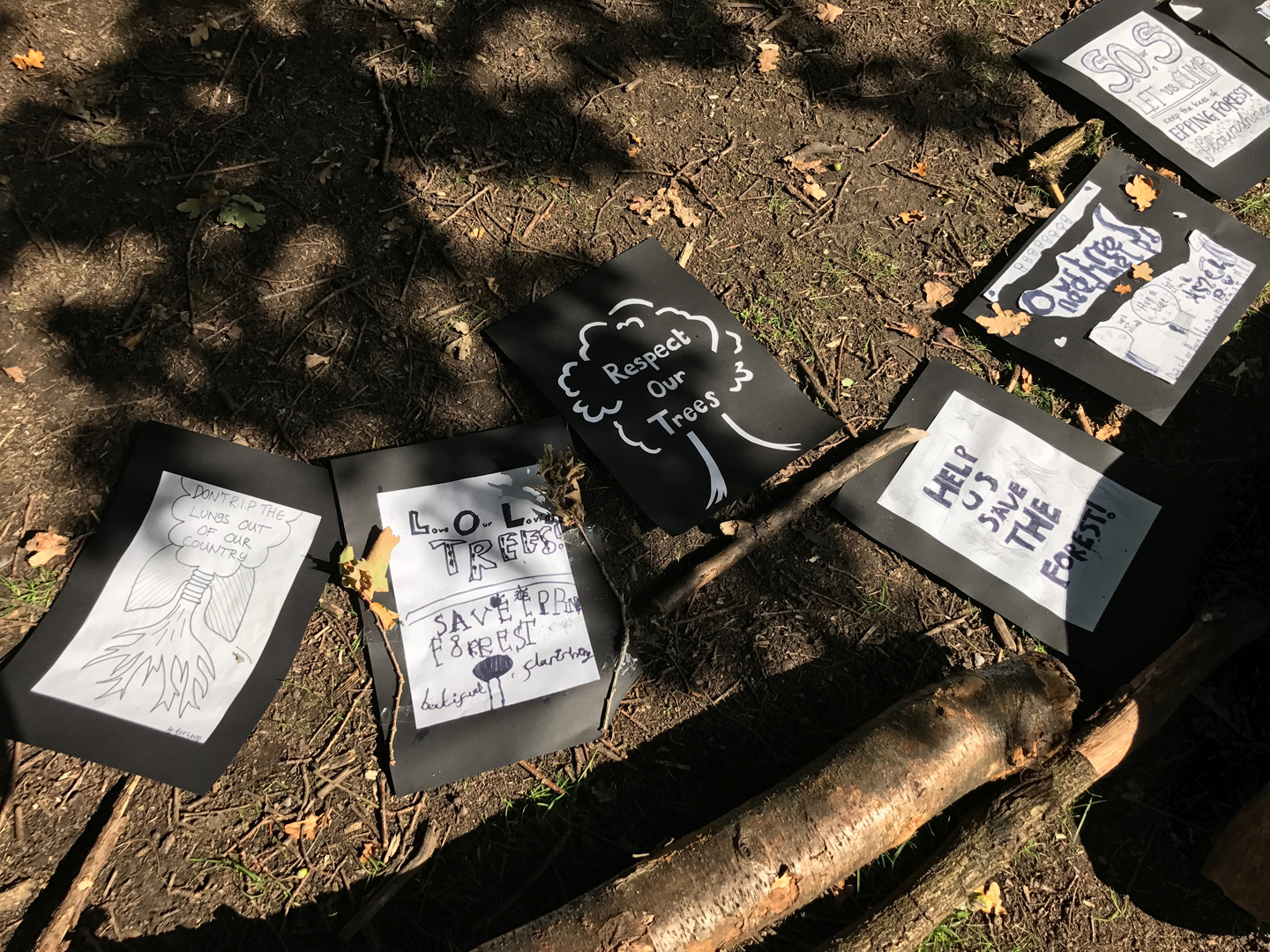
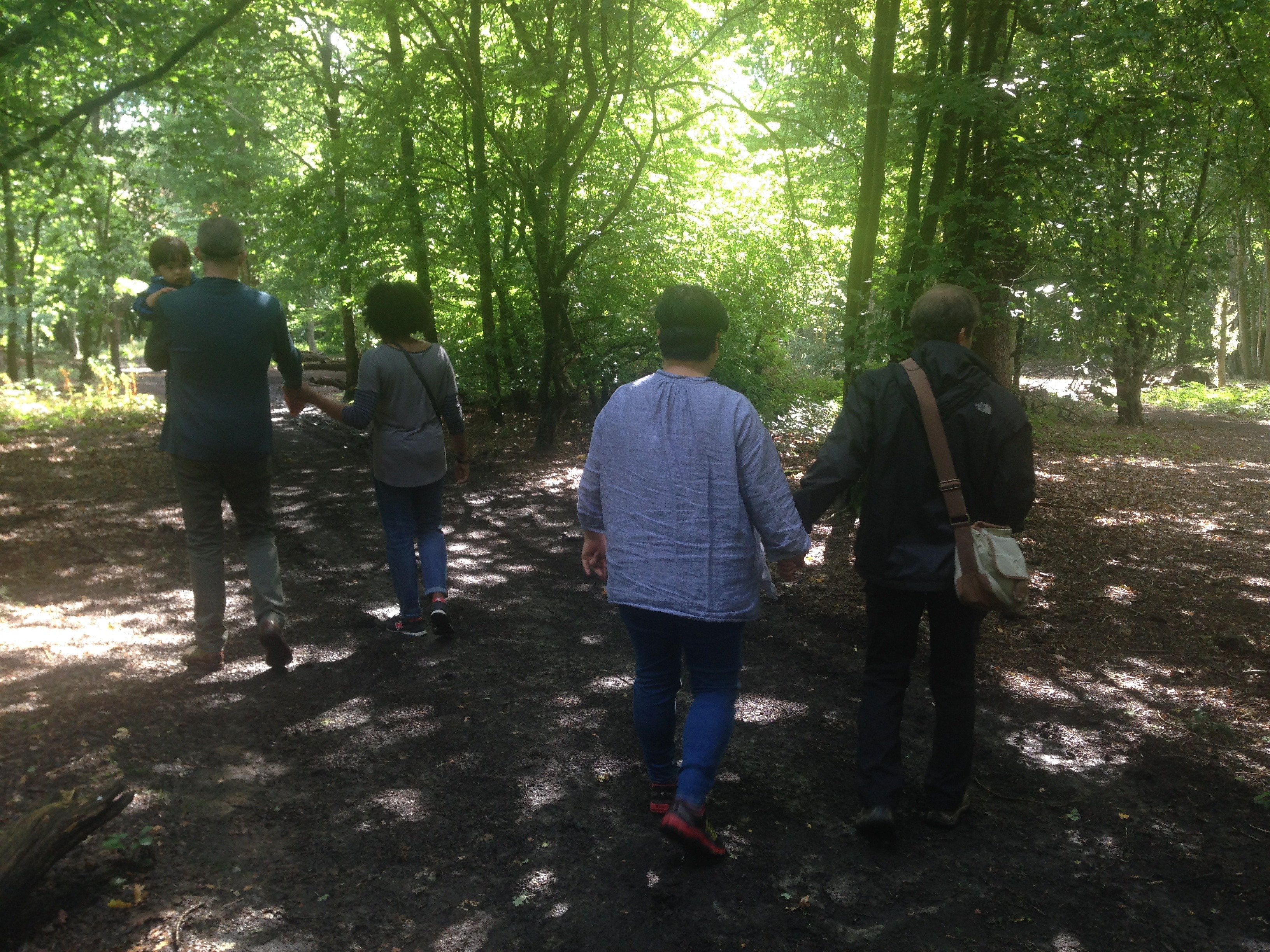
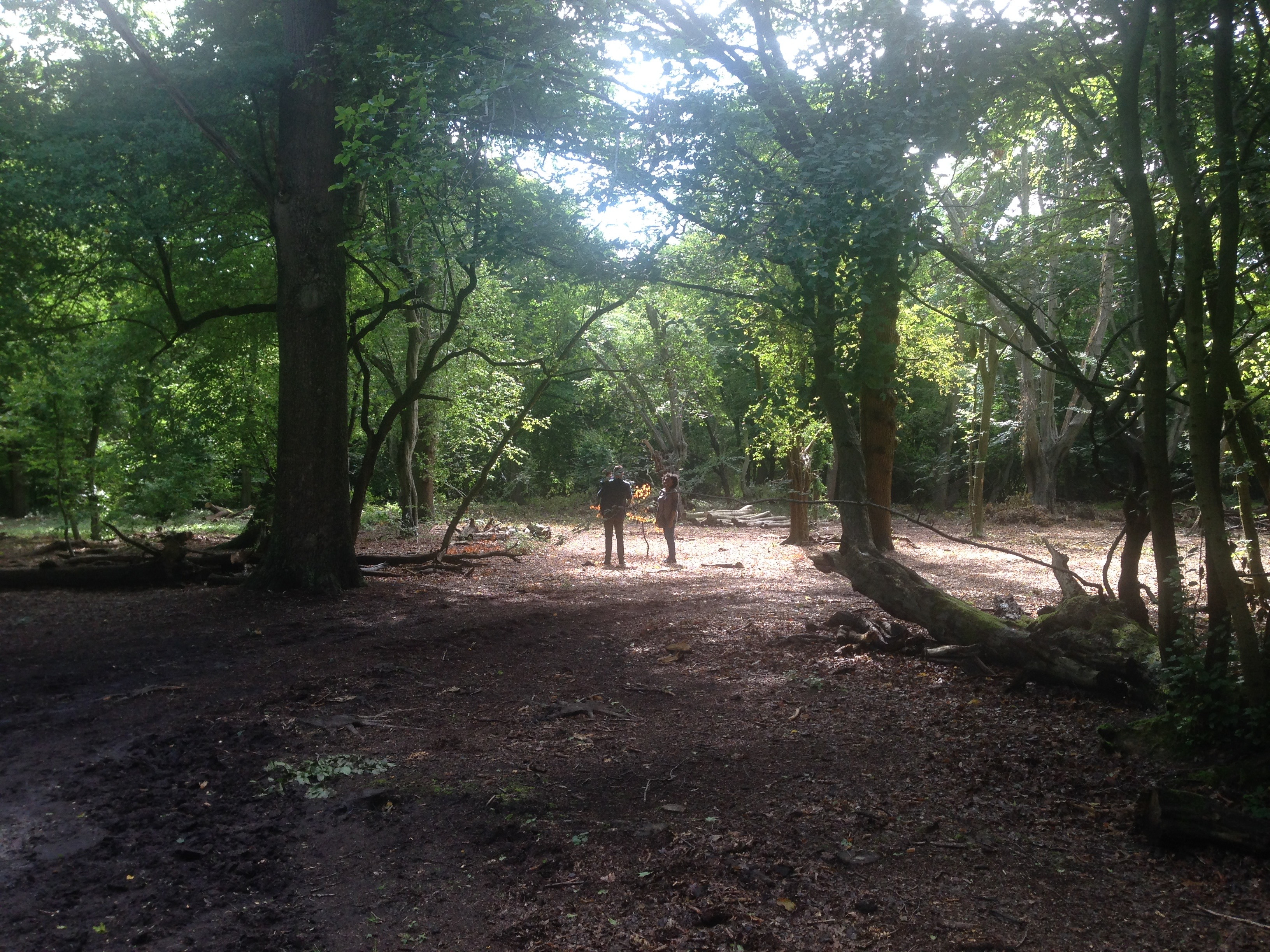
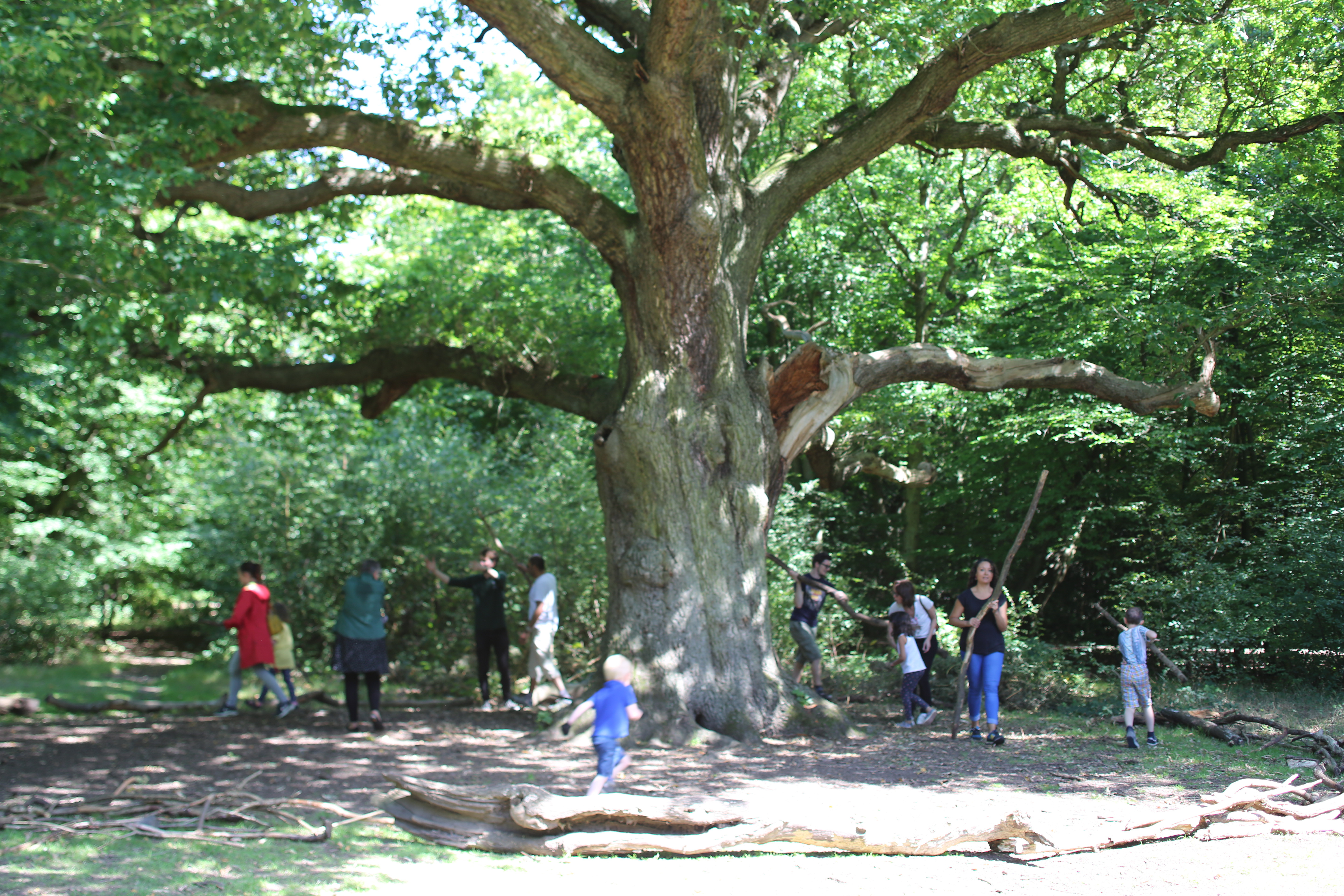
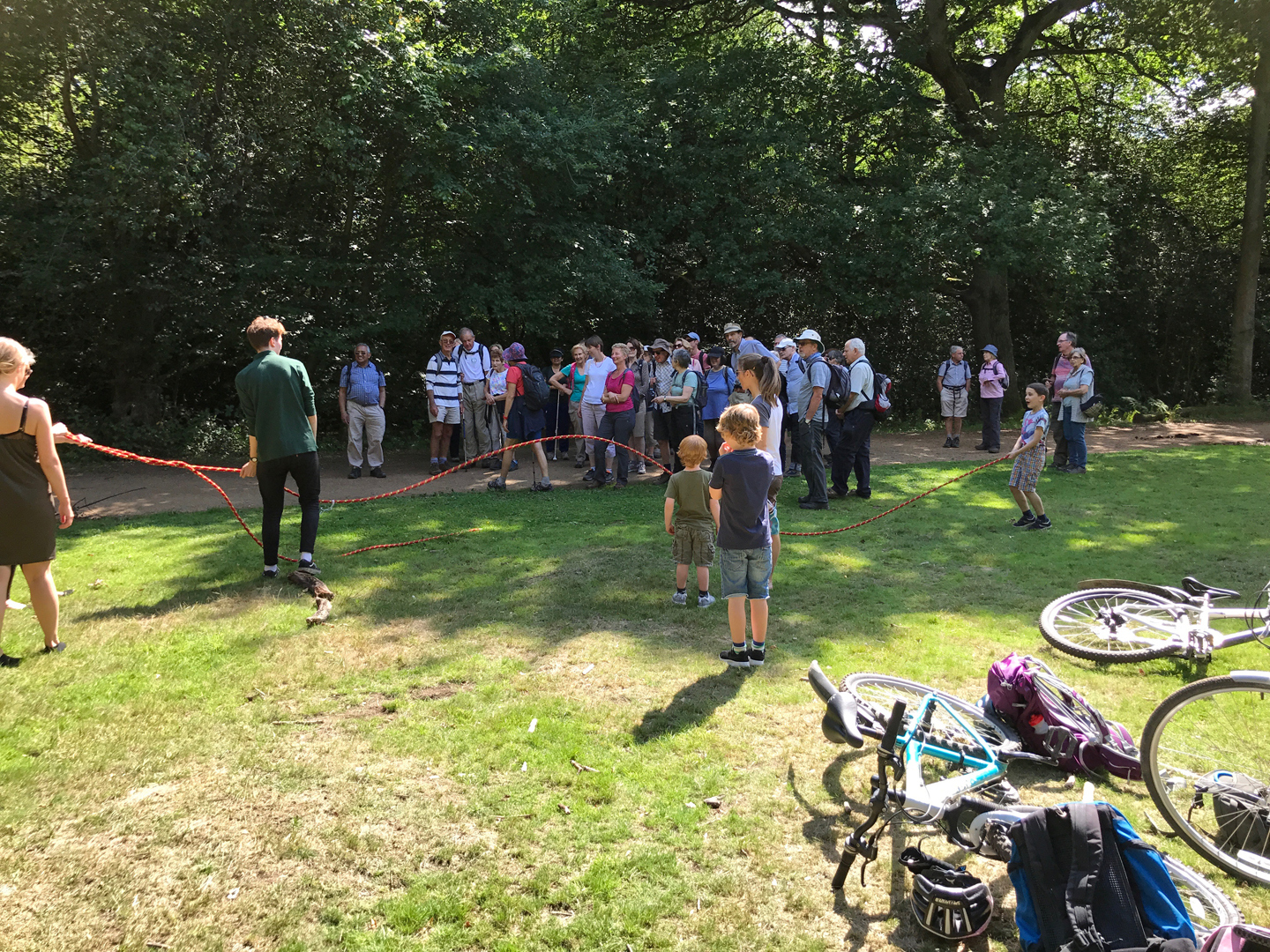
Once a Royal Forest, a place where the upper classes could hunt deer and the lower classes could collect firewood, Epping Forest on the London-Essex border has for hundreds of years been an arena of labour and leisure. The British artist Gayle Chong Kwan has spent the past two years researching the stories that are nestled amongst the historical undergrowth of London’s biggest woodland, as it is increasingly engulfed by the growing city. Chong Kwan’s current exhibition The People’s Forest at the William Morris Gallery involves photography and collage after investigating the multiple values of the woodland. Commissioned by the William Morris Gallery and the Barbican, she engaged with the forest as a contested site of historical and recent protest and conflict between capital and common. Echoing the exhibition, Chong Kwan created a totemic tree-like sculpture that stood in the Barbican’s foyer, named The Fairlop Oak after a tree that once stood at the site of a popular eighteenth century fair in the Hainault Forest (near to Epping Forest) that brought large numbers of people to the area. Her research uproots the many protests to save the woodland dating back to the mid-nineteenth century and reflects on the area as a place of liminality, the threshold between the fast-paced metropolitan and the sanctuary of the countryside. As the city and gentrification encroaches further out, the forest becomes even more torn as either a site for monetary potential or as a space for nostalgic escapism.
'Gayle Chong Kwan: The People's Forest' by Charlotte de Santos, Contemporary Art Society
The natural tendency of a tree is to generate offshoots. It puts out feelers in the form of branches; and sends out seeds to create new plantings. A tree may be permanently rooted in one spot, but it never stands still. It is the living epitome of a will to grow – it proliferates, and it multiplies. A tree can also be a marker of how a community grows around it: an index of how much things can change over the course of a lifetime (even a decade) and also a symbol of continuity going back through the generations. One such tree was the so-called Fairlop Oak, a particularly impressive, imposing specimen that towered over a vast clearing at the edge of Hainault Forest in East London. In its shadow, and under its canopy, an annual fair took place, which grew in size and popularity throughout the eighteenth century, eventually attracting crowds of 200,000 people. Although the original oak no longer stands (it was fatally damaged by storm and fire a century and a half ago), the fair that took its name, and its inspiration, from it quickly took its place as an equally prominent beacon in the local landscape. The Fairlop Oak is the name of a new artwork by Gayle Chong Kwan that is also the linchpin of a wider project of hers called The People’s Forest. Evoking the form of a pollarded tree, Chong Kwan’s informal sculptural structure has a playful, totemic character. At the end of each branch is a thin, delicate tendril – sprouting from each stem like ribbons on a maypole. And at the end of each of these is a tiny model of a rudimentary ‘house’. Bursting forth like haphazard fruit, they hang in the air like lanterns, or bits of bunting, or baubles of mistletoe. Their presence alludes to the significance of the forest as a place of shelter and a site of early human habitation but also, perhaps, to its annual harvest of timber as a shared, renewable resource. Chong Kwan’s art consciously cultivates offshoots. From a central premise or framework, her pieces evolve through the participation of the people she encounters in her research and on her travels: the multiple bird box-size ‘houses’ that decorate her homage to the memory of the Fairlop Oak have all been fabricated by various individuals that she met along the way. Made from waste materials found lying around the borough, each one is a rough approximation of the homes that each participant currently inhabits. A celebration of the diversity of personal stories, and of common roots, the work also mourns other houses (and communities) that have been lost, as the capital city expands and as roads and other major developments clear away what was there before. The version of The Fairlop Oak that Chong Kwan is showing at the Barbican is itself an outgrowth of an earlier manifestation that was staged at the Walthamstow Garden Party in July 2017. Reflecting on the two-way traffic between inner and outer London that events like the Fairlop Fair would have instigated, the work deftly links different localities and histories – gathered together under one roof as if under the big top of the branches of a spreading greenwood tree.
'Gayle Chong Kwan: The Fairlop Oak' by Steven Bode, Director, Film and Video Umbrella
At the Barbican, back in November last year, coming through the foyer from the car park to the café, and then again later hurrying to the concert hall to catch a performance by Pharaoh Sanders, I twice caught sight of what seemed to be a temporary structure propping up the ceiling. There was little time to investigate, but curiously it appeared to continue up through the floor above. I didn’t give it much thought. I was intent on a tribute concert for Alice and John Coltrane and an evening of Cosmic Jazz.But now I keep seeing mention online of The People’s Forest and The Fairlop Oak and I realise that I should have been paying more attention. The Fairlop Oak is the title of a sculpture by Gayle Chong Kwan, named after a celebrated tree that stood for many years as the symbol of its local community in east London. A wooden structure, modelled on the shape of an ancient pollard, containing branches gathered in Epping Forest and hung with little paper houses, stands on top of a tall wooden scaffold that extends through two storeys of the Barbican Centre and into the atrium above. And now I’m beginning to think I should go back for a closer look.
Frames of Reference blog
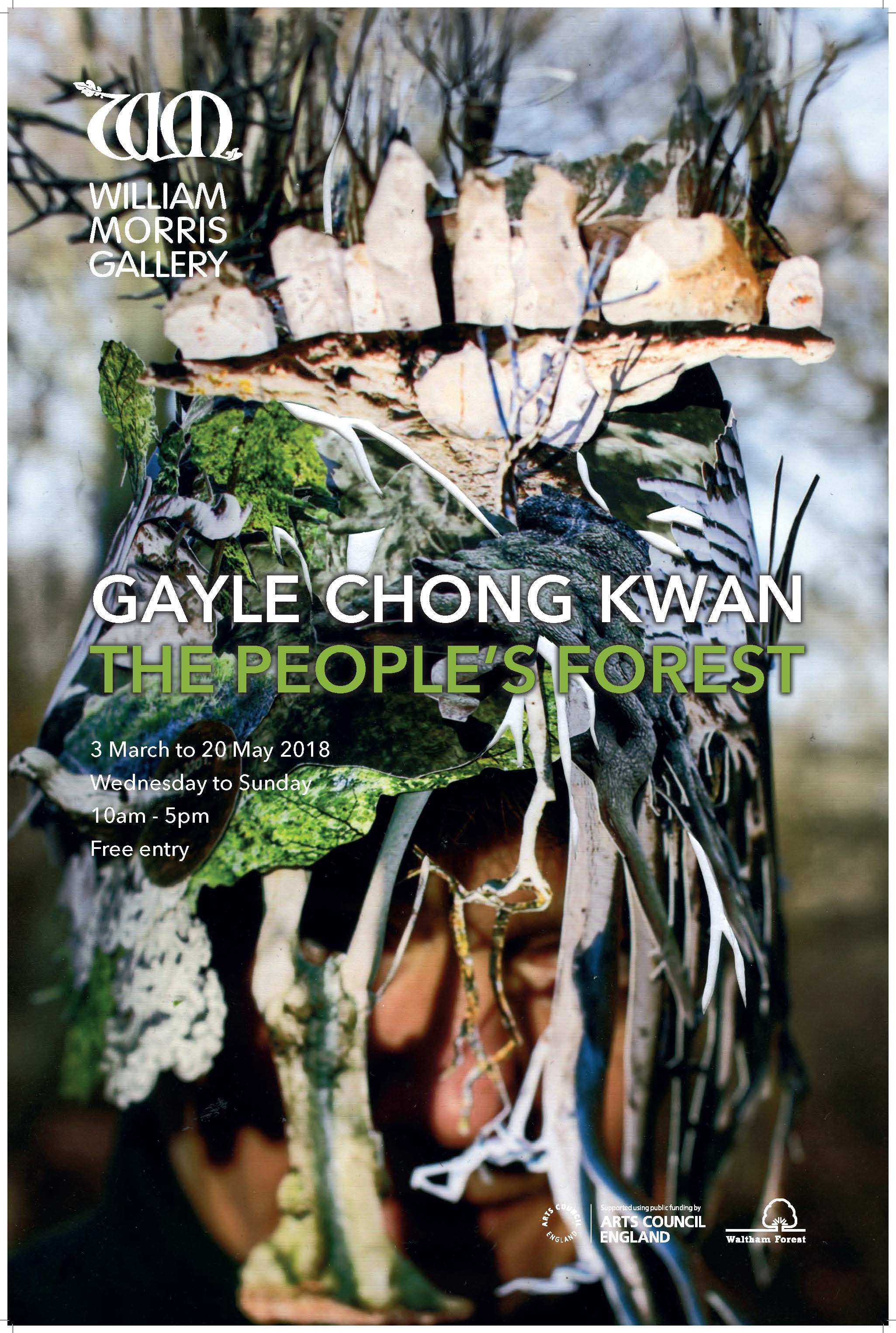
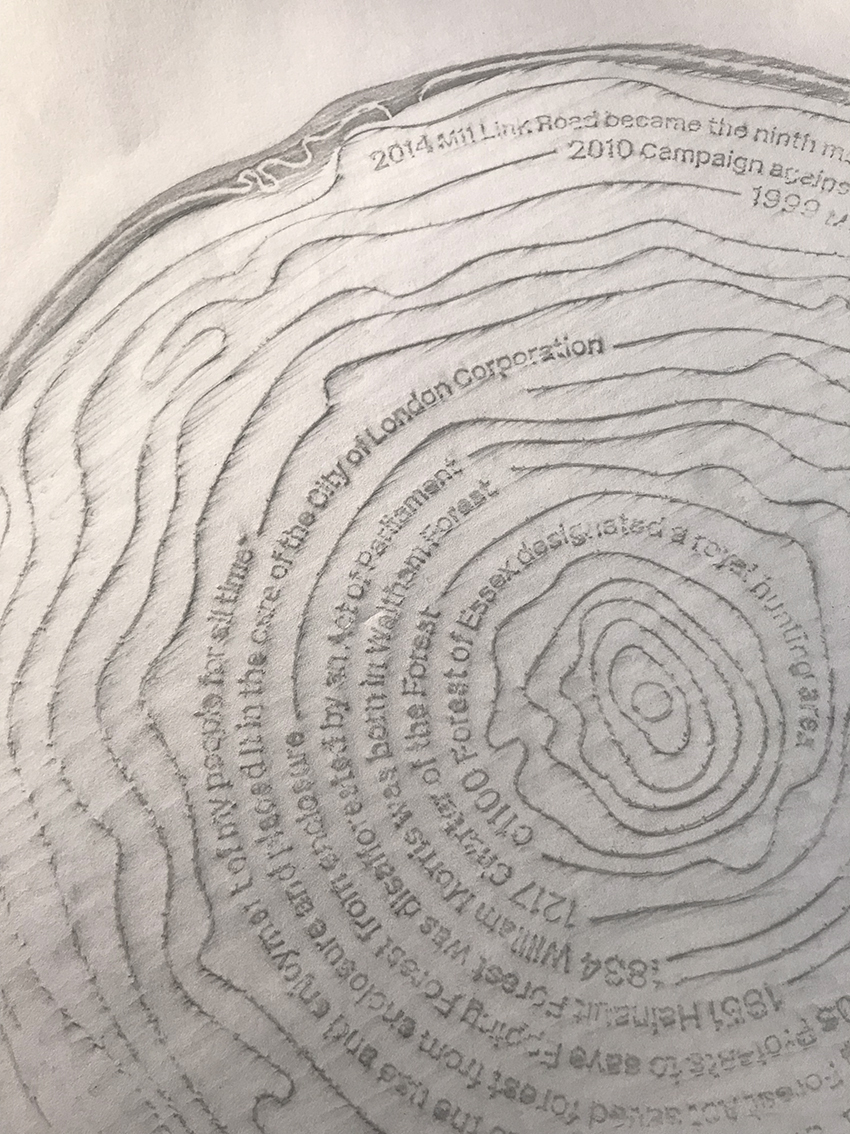
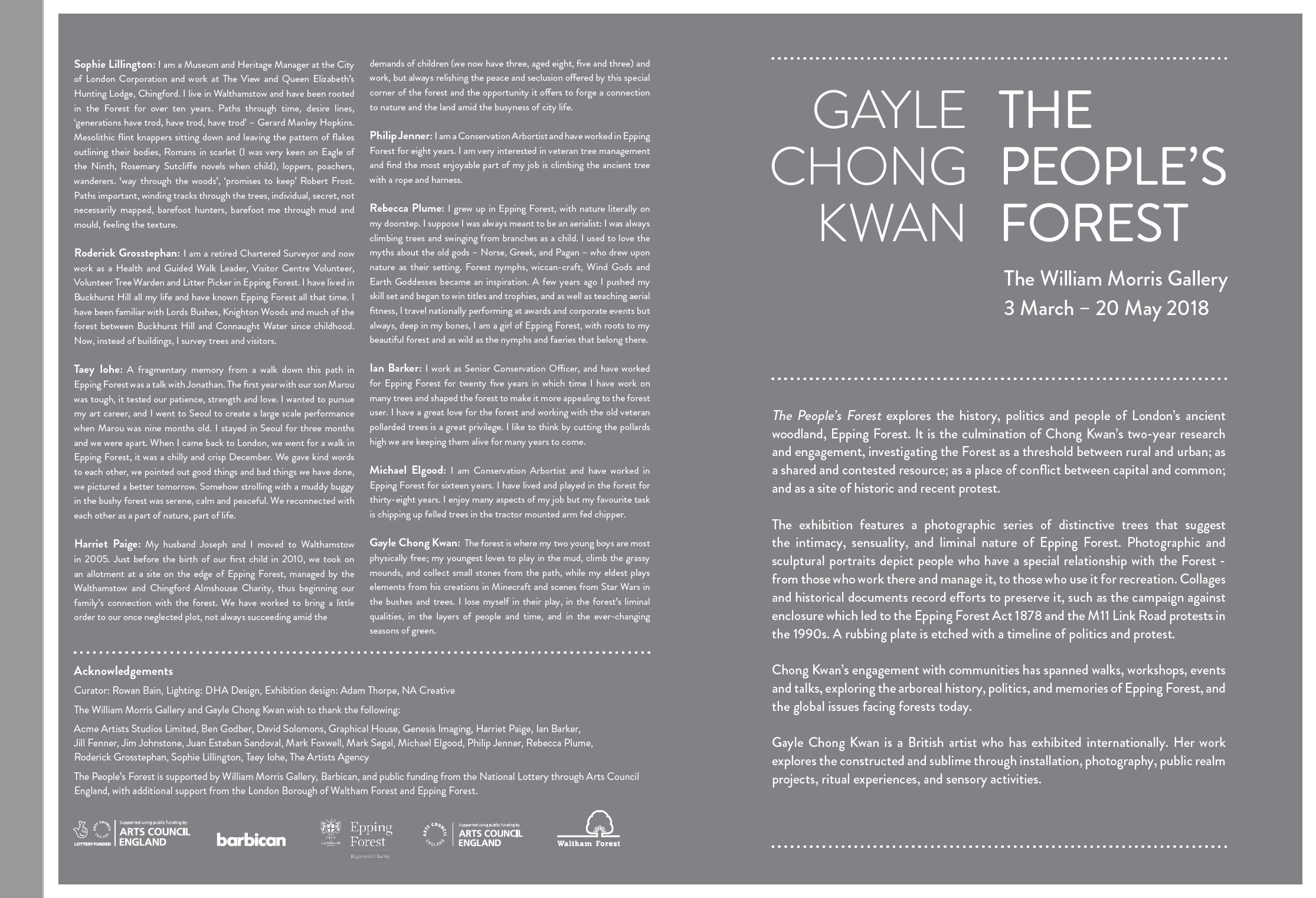
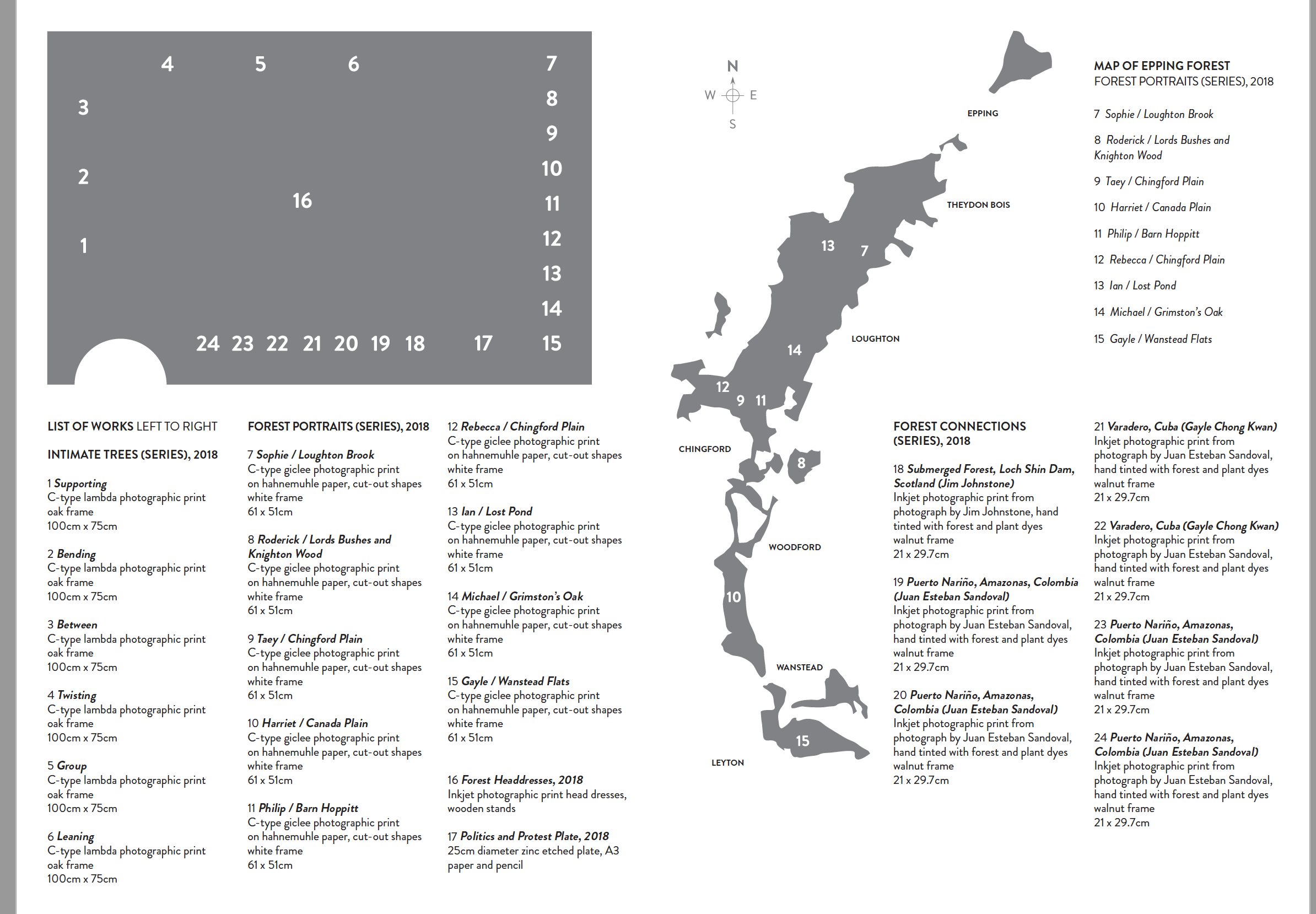
PRESS LINKS
'Artist to Watch: Gayle Chong Kwan' in Contemporary Art Society
'The People's Forest' in Frames of Reference blog
'Gayle Chong Kwan's 11-metre high sculpture The Fairlop Oak takes root in the Barbican foyer' in Art Daily
